Сообщение 50 amazing and bizarre photos появились сначала на Old Pictures.
]]>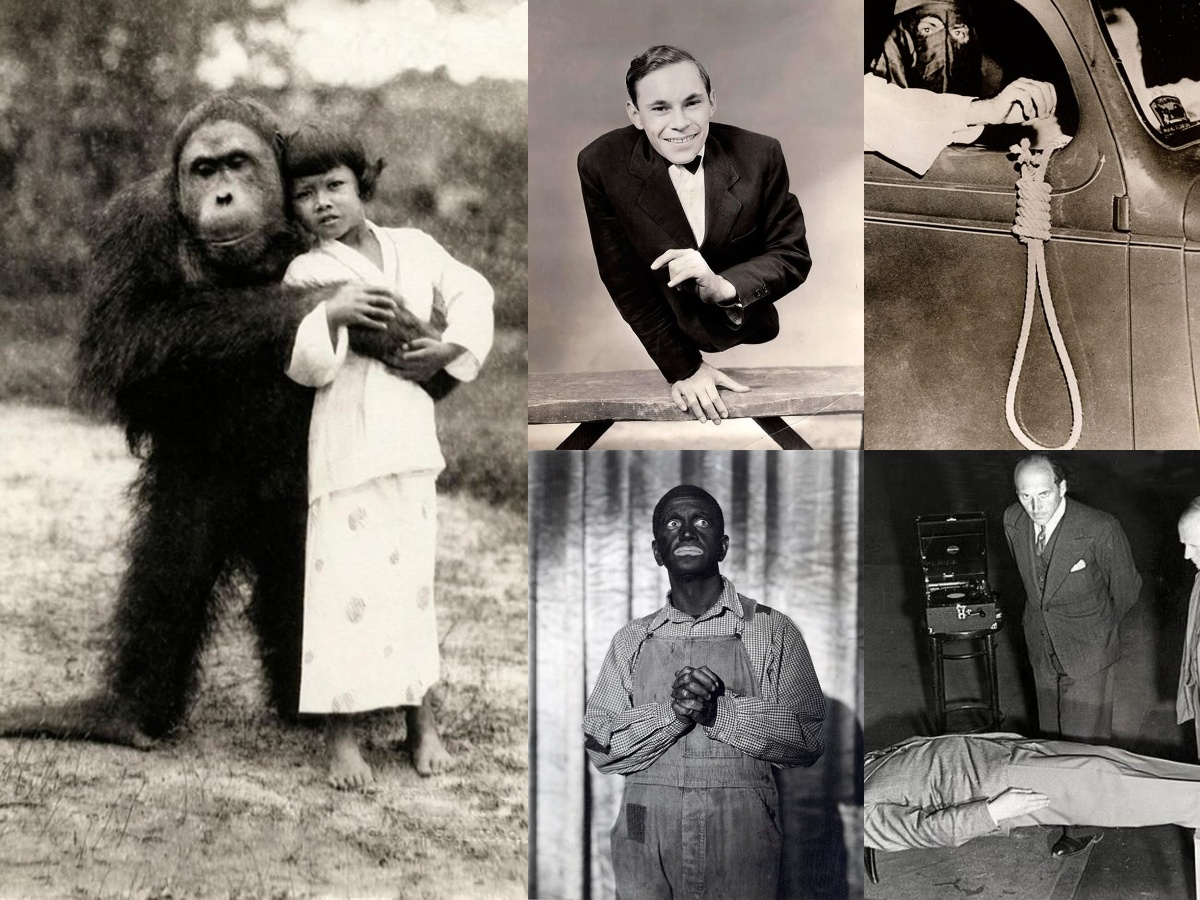 Old bizarre photos publication is always a special thing for an Oldpics editor. It’s not that easy to select and categorize properly noteworthy pictures. How should you arrange for them? By photographer’s name, subject, time frame, location, and so on. But sometimes unexpected help comes! Like Rob Moorees, who archived the notable and bizarre photos for decades. His selection criteria seem to be ‘the stranger, the better.’
Old bizarre photos publication is always a special thing for an Oldpics editor. It’s not that easy to select and categorize properly noteworthy pictures. How should you arrange for them? By photographer’s name, subject, time frame, location, and so on. But sometimes unexpected help comes! Like Rob Moorees, who archived the notable and bizarre photos for decades. His selection criteria seem to be ‘the stranger, the better.’
His bizarre photos selection features both a photo of Hitler in Tyrolean shorts, a dinner for soldiers with crippled faces, and a married American nine-year-old girl with her twenty-two-year-old guy.
Most of these bizarre photos are documentary, but they grab the attention of the casual viewer.
Unforgettable archive photos
Rob Moorees describes the origin of his collection as follows. He was called to digitize the large Dutch archive “Spaarnestad” located on the outskirts of Amsterdam. As he was finding more and more amazing and bizarre photos in the archive, Rob as permission to separate them from the rest. As a result, the researcher saved up an impressive amount of unusual photos on his laptop and began to publish them on the Internet and specialized magazines.
Rob even organized few exhibitions and printed a photo album titled “Life is a strange thing.” Moorees emphasizes that he deliberately did not categorize his bizarre photos according to any criteria. He wants each of the photographs in his archive to be not just part of a series or a thematic collection, but to have an inherent personality and self-worth in the photo. This effect is enhanced because most of the photographs in the archive belong to unknown photographers. Muris compares this situation with the works of the great artists of the past. We don’t remember anything about them but their paintings, their masterpieces, their vision of the world…
Read more: 100 most important pictures in history

A circus performer in an aquarium car with crocodiles, Berlin, 1933
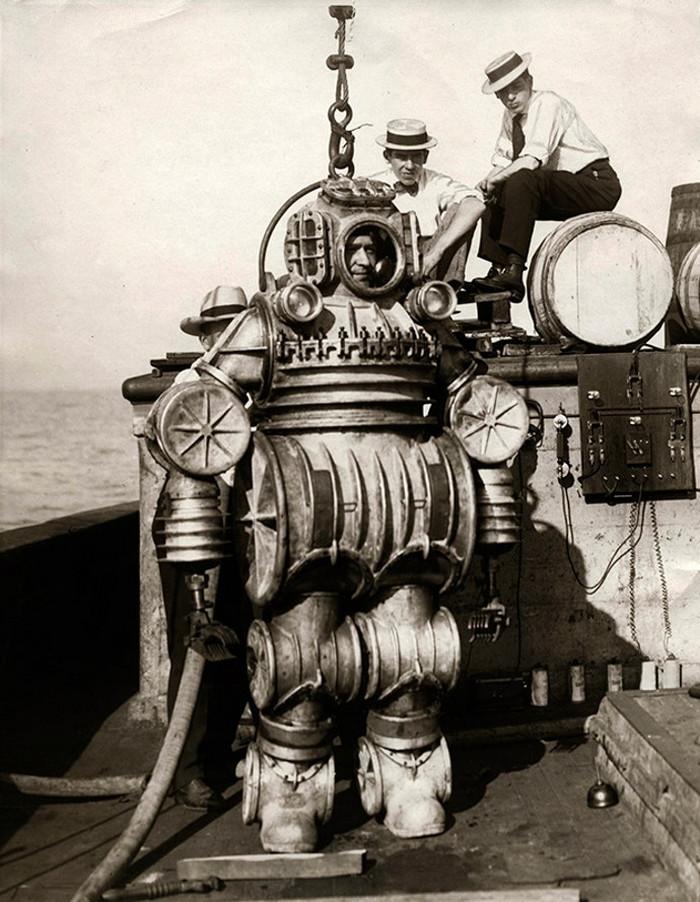
An iron man of the past in a diving suit. The suit’s name was ‘Iron man’ too. It had an electric charging and pressure protection systems. New York, 1907
Here are some more bizarre diving suits from the past: It`s not a robot, it was a diving suit in 1911
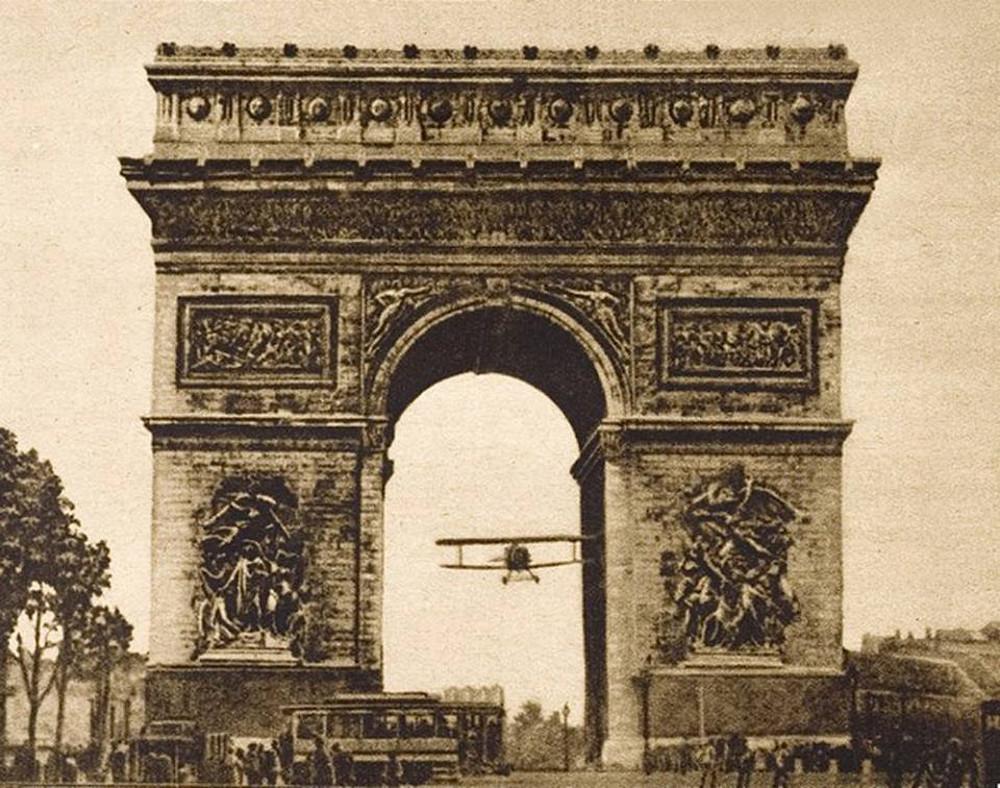
Charles Godefroy flies through the Arc de Triomphe in Paris. The height of the opening is 29.42 m, the width is 14.62 m. The wingspan of the aircraft is 9 meters wide, 1919
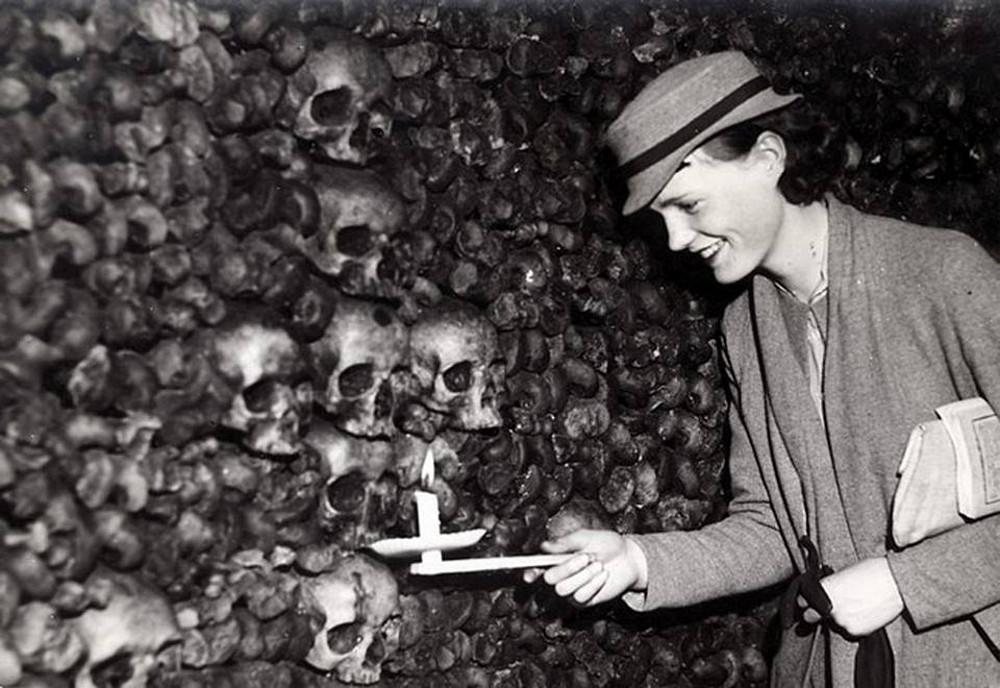
A visitor with a candle in her hand smiles at the large collection of skulls in the catacombs of Paris. 1935
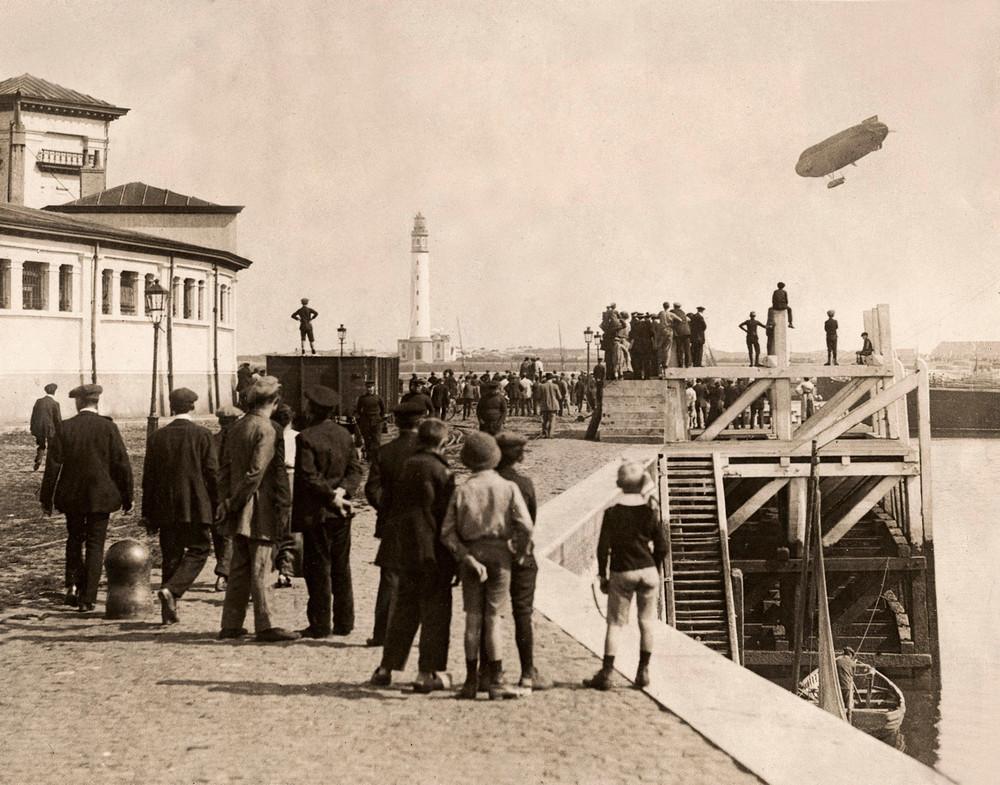
A crowd watching a British airship fly over the port of Ostend during WWI, 1914
See more: WWI German submarine on the beach.

Actor Johnny Ick, who was born with an underdeveloped lower torso, poses for a promotional photo for the famous movie ‘Freaks,’ 1932
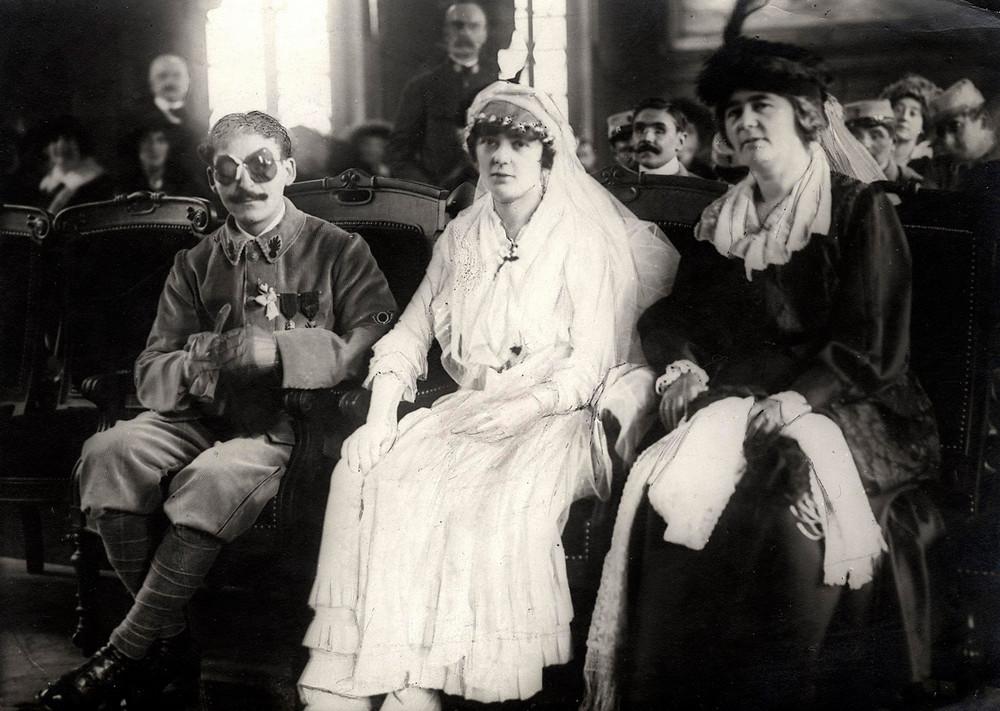
Blind WWI Veteran’s marriage, 1921
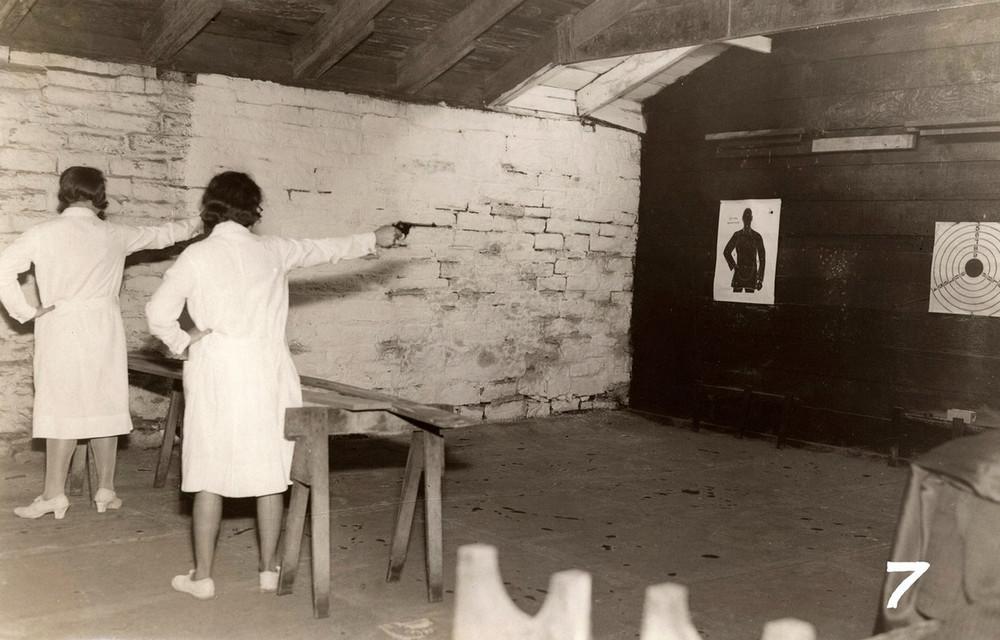
Women learn to shoot in prison on Roosevelt Island, New York, 1932
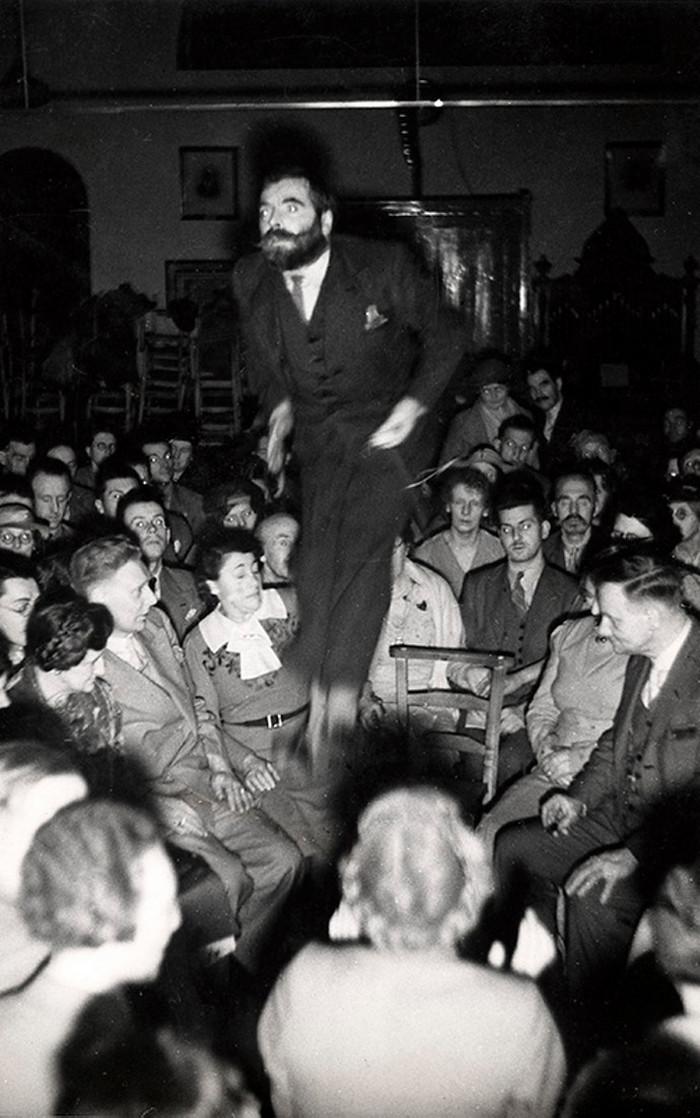
Welsh spiritualist Colin Evans feigns levitation by jumping up and down in total darkness and filming himself with an infrared camera. London, 1939

Untitled
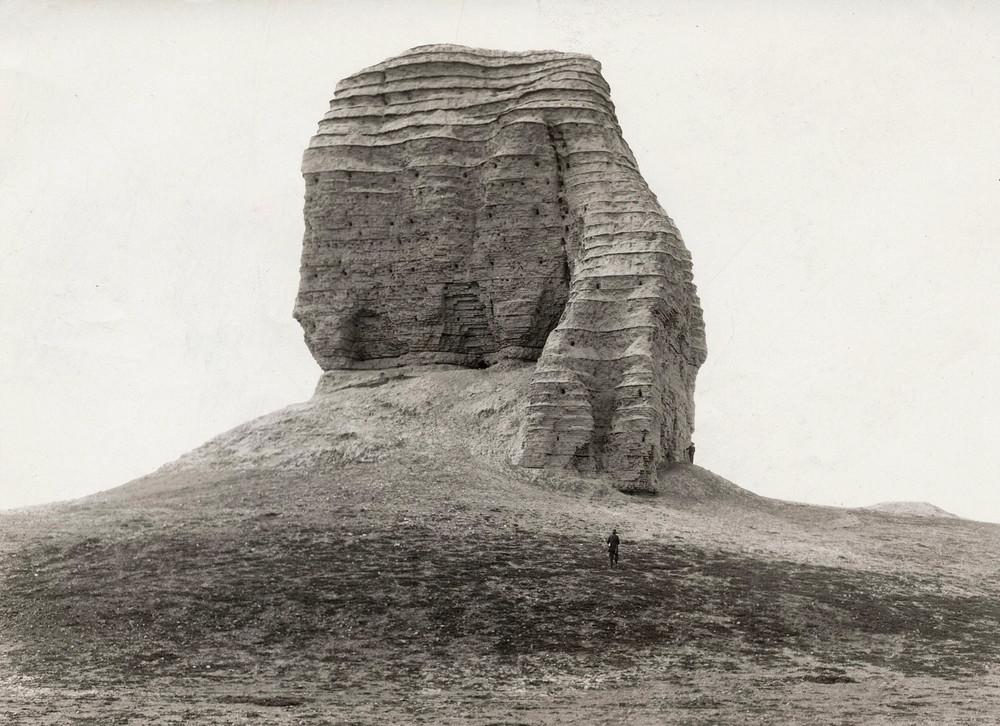
Tower of Babel from the Old Testament. A. Frankl, 1927
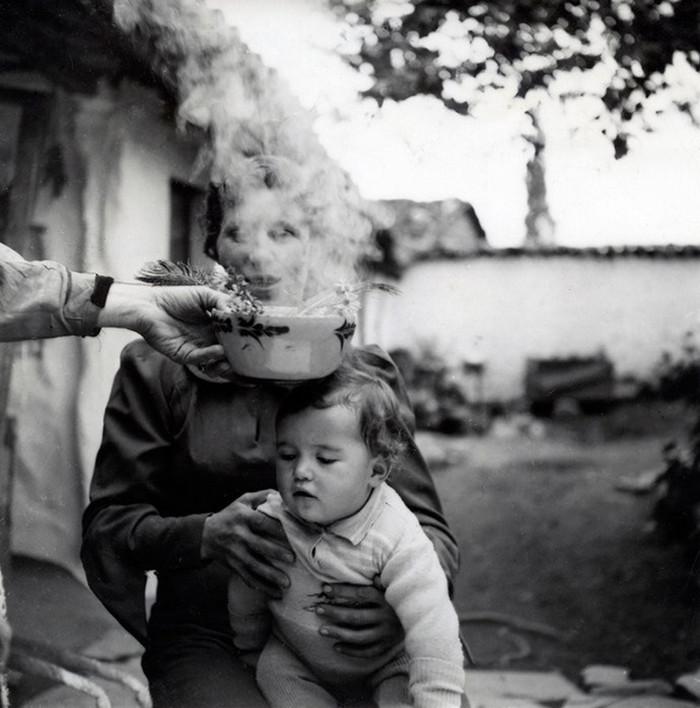
Unknown author
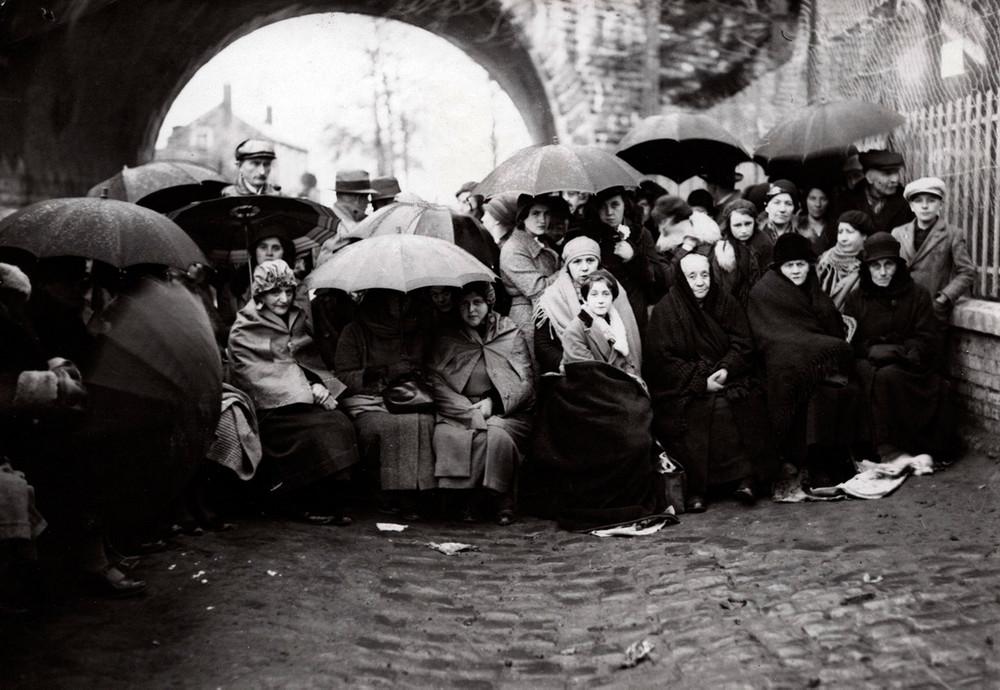
Boren city citizens await the appearance of the Virgin Mary at the viaduct, not far from the Christian school, where children allegedly observed her the day before. Belgium, 1933
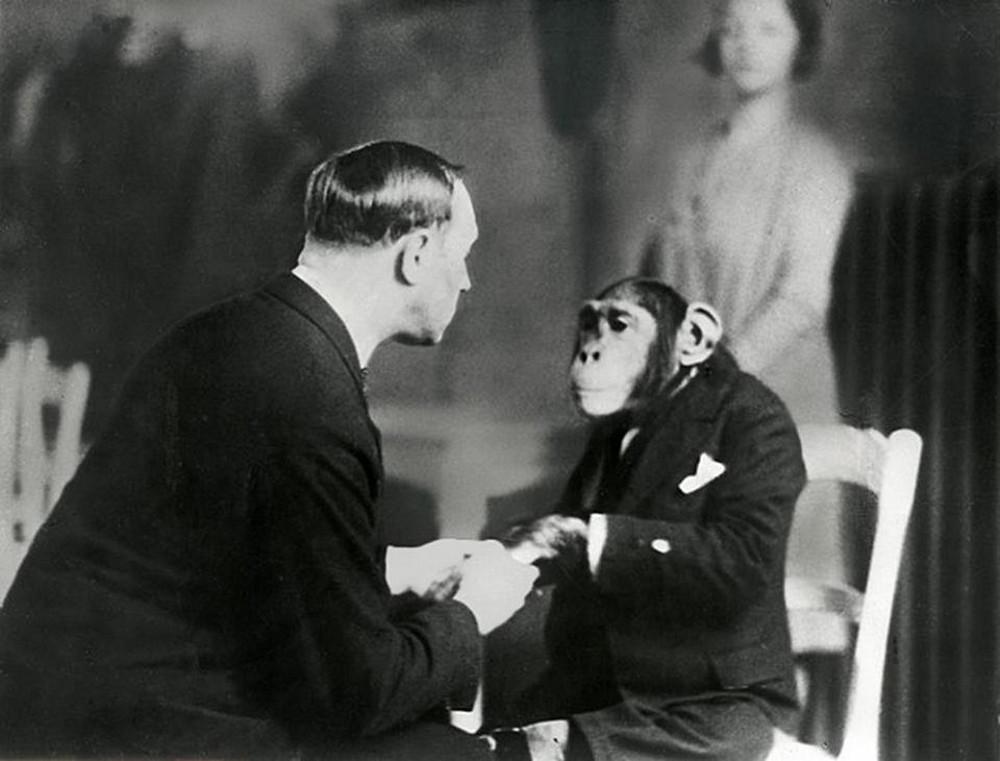
The telepath tries to hypnotize the chimpanzee, 1941
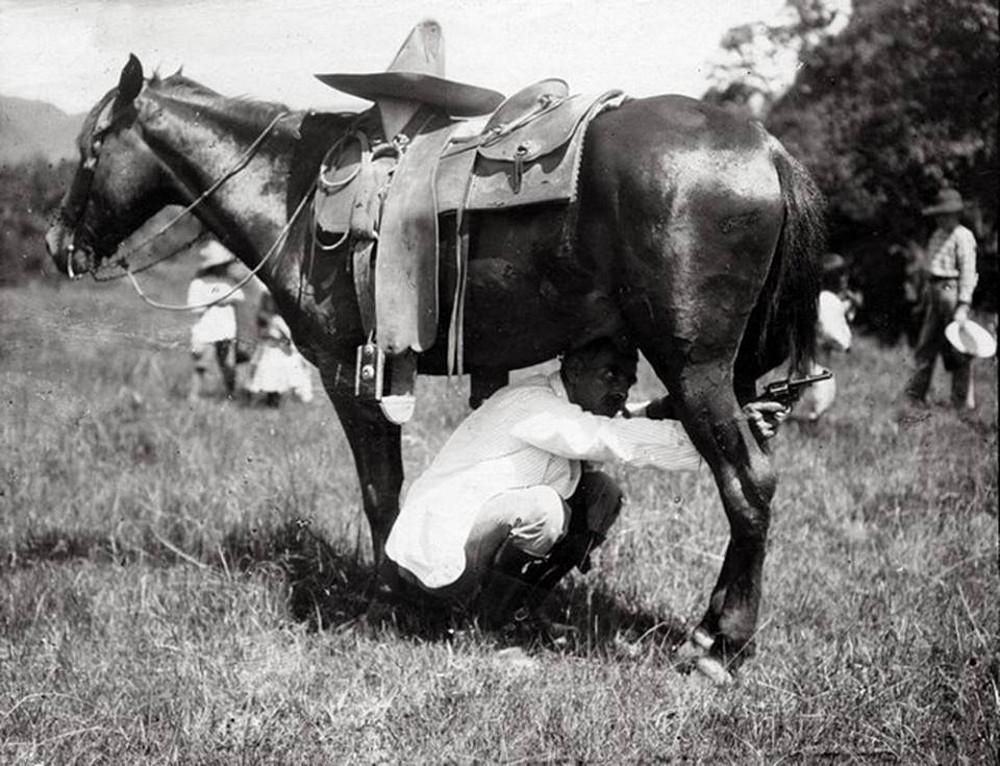
The tactical trick of soldiers during the Mexican Revolution, 1913
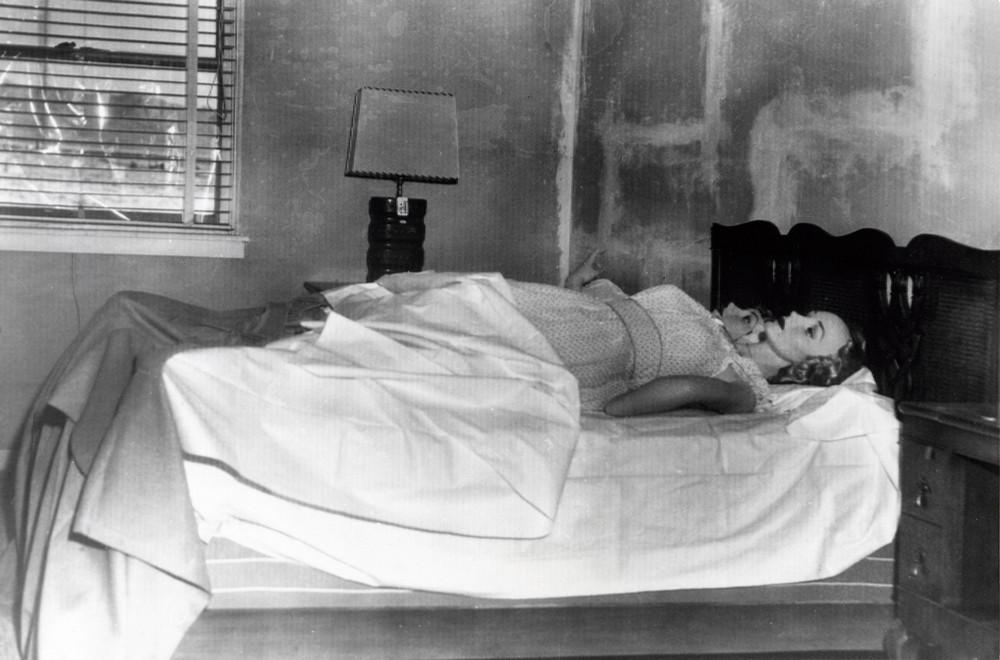
The house at the training ground where the US Army conducted experiments on the use of nuclear weapons. Mannequins, 1954 play the role of humans
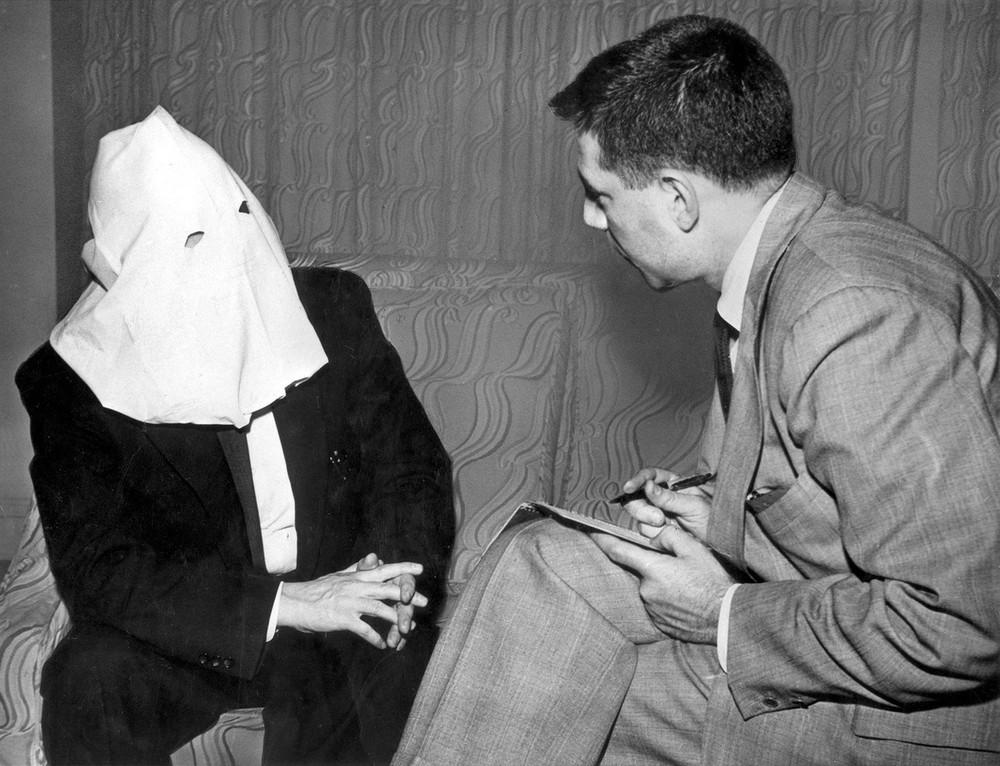
Soviet cryptographer Igor Guzenko, 1945. In this photo, he hid his face for an interview with Soul Pett from the Associated Press. Guzenko worked at the Soviet embassy in Ottawa and fled to the West in 1945. He brought more than a hundred classified documents and information from the Soviet spy network in Canada; 29 spies were arrested and convicted afterwards. Guzenko received an impressive reward, a mansion, and political asylum.
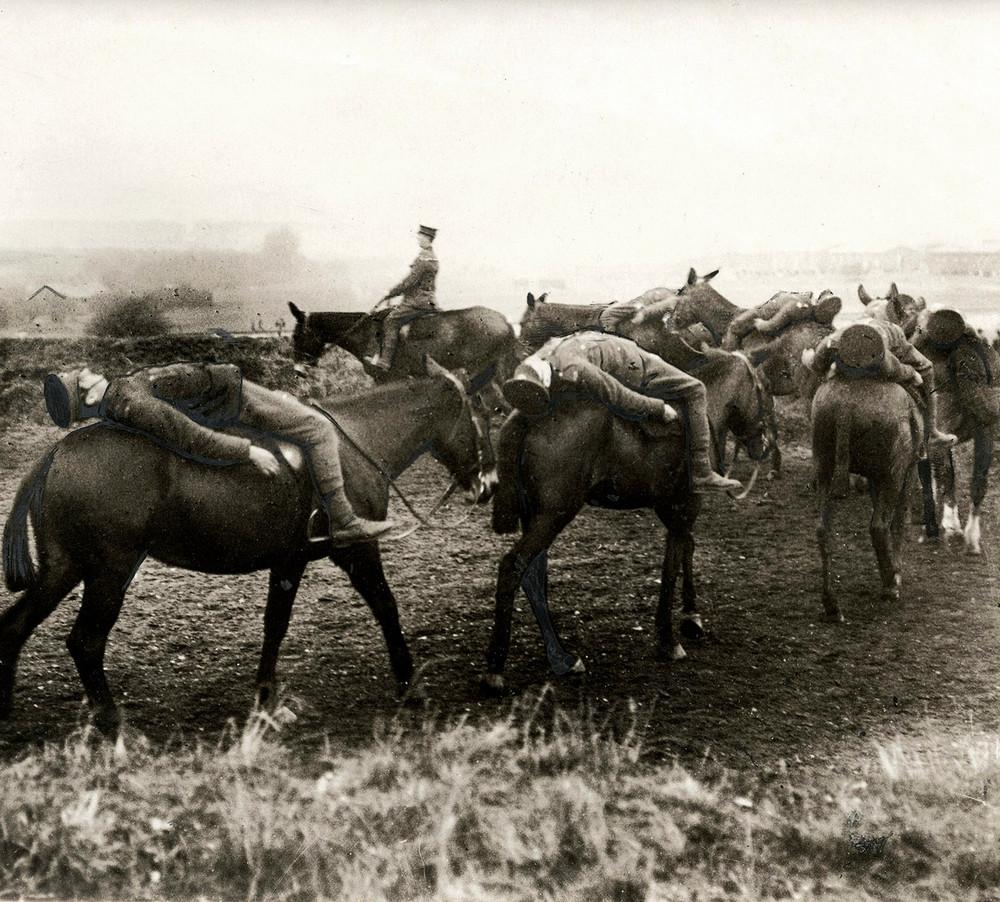
Soldiers of the British Royal Horse Artillery on pack horses. The animals turned out to be so obedient that they allowed the soldiers to perform tricks like these, 1915
Read more: German WWI submarine UB122 that spent 92 years underwater
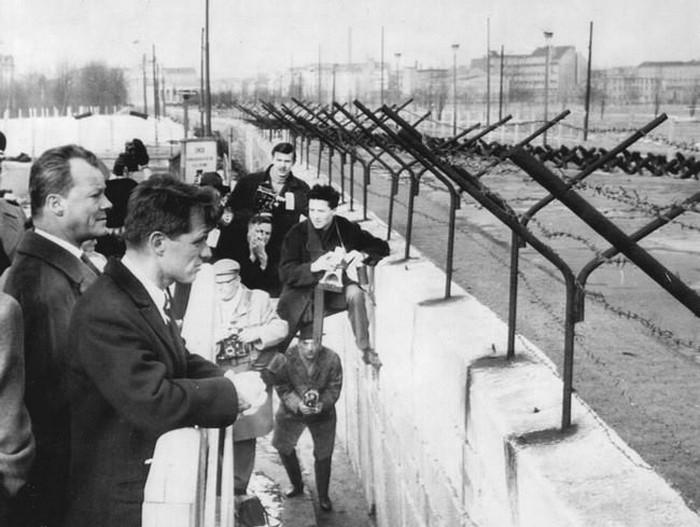
Robert Kennedy and West Berlin Mayor Willie Brandt look through the Berlin Wall, February 22, 1962
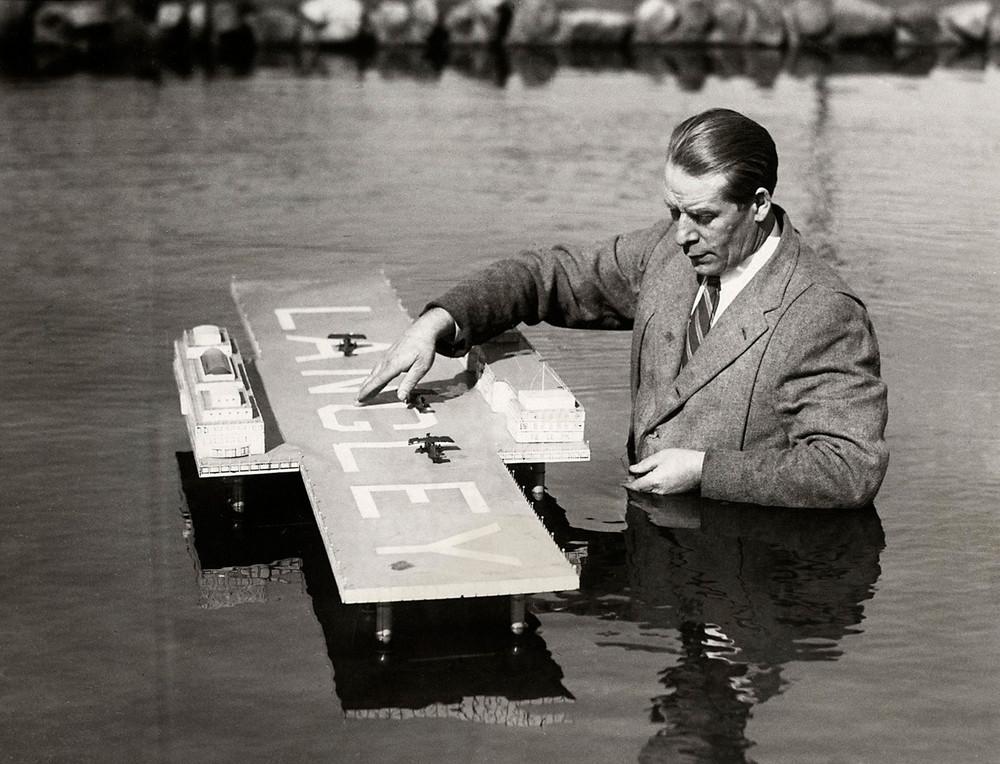
Photographer unknown

Newborn mutant rabbit with one head, endowed with two bodies. 1941
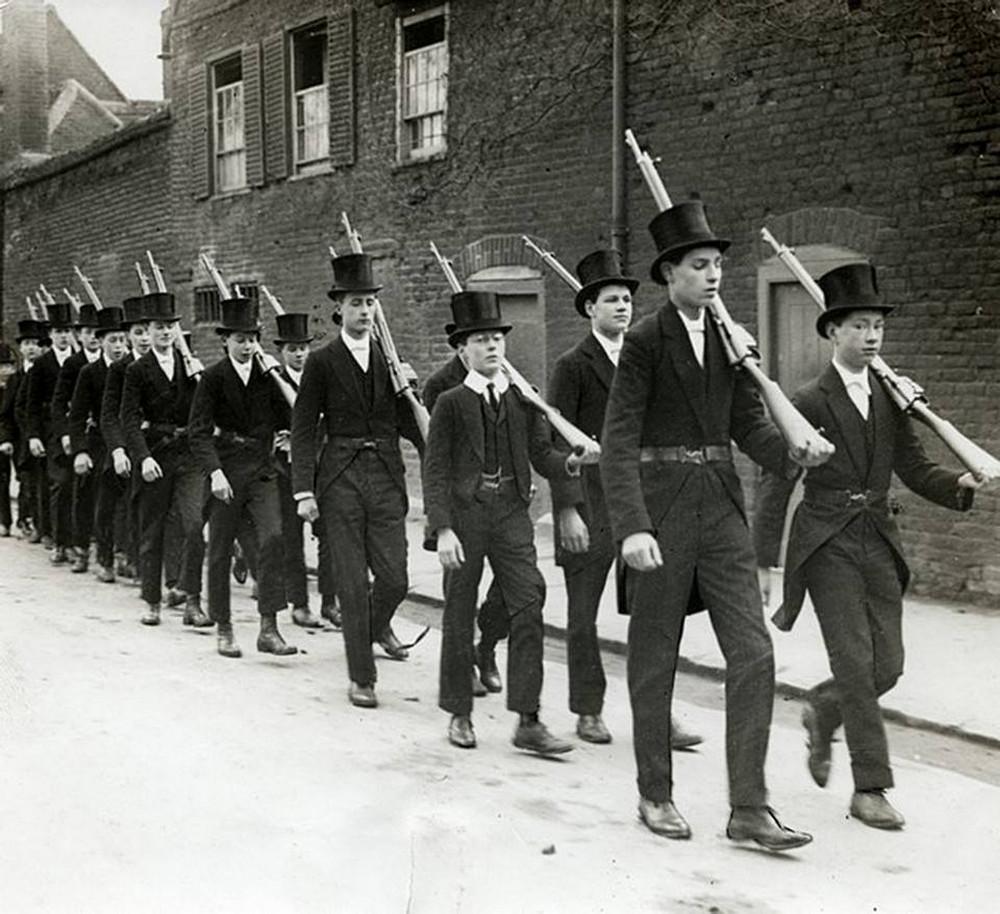
Military training at Eton. Since then, the uniform of the students of the elite educational institution has changed little; only the top hats were canceled, 1915
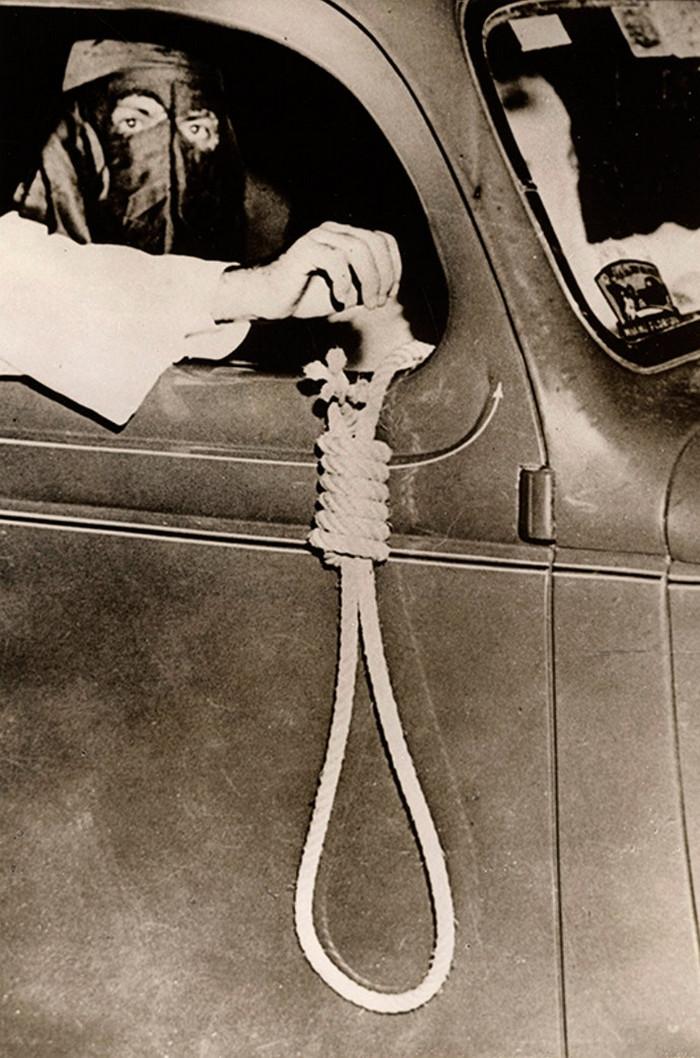
KKK’s members drive around Miami in robes and, with a noose, convince African Americans to abstain from voting in elections. Miami, 1939

Marcia Pinkenfield, six months old, who won a very unusual competition and was chosen as the most beautiful child in America, 1927
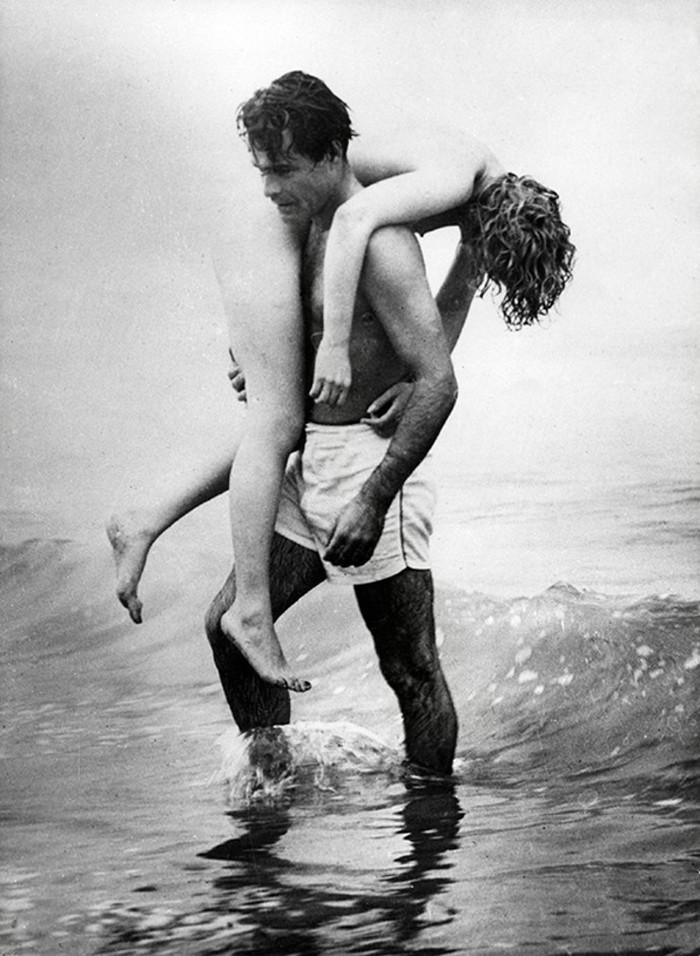
A real Malibu Lifeguard. Richard Tide sleeps a girl who was washed into the ocean by a wave

Italian traveler Attilio Gatti with two hired pygmies and a gorilla caught by them in the Belgian Congo, 1930
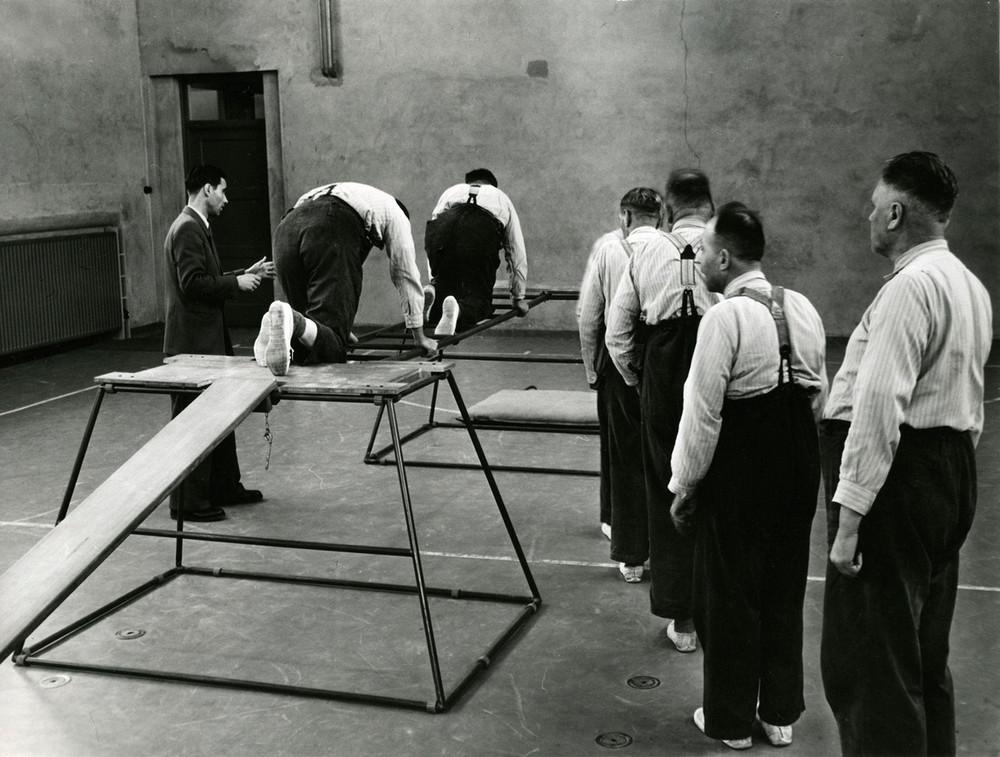
Exercises at the Sint Willibrordus mental hospital. Netherlands, Henk Blansjaar, 14 February 1956
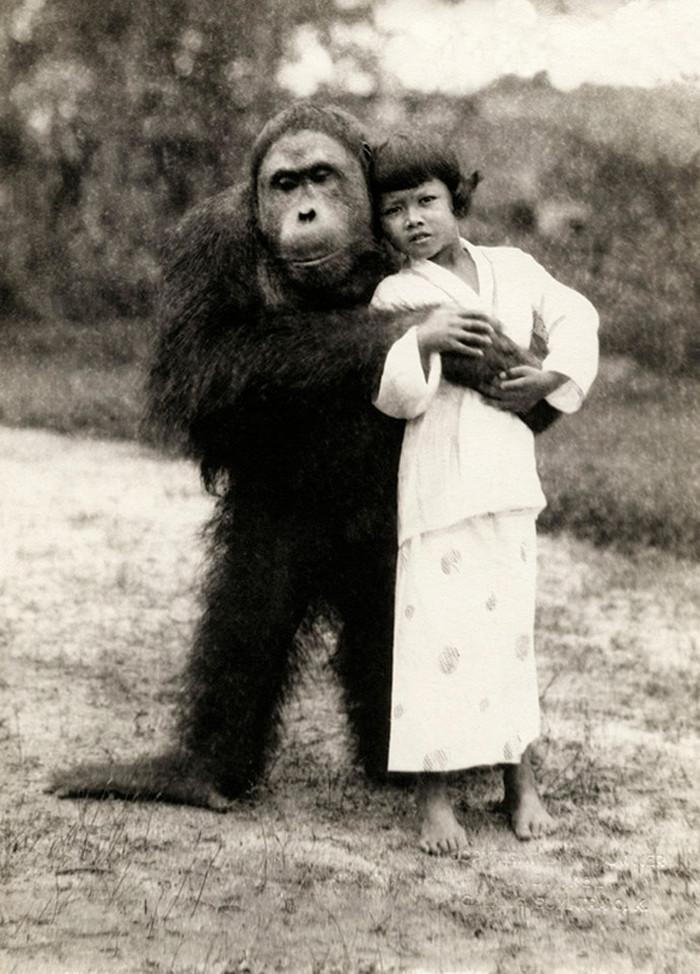
Girl and orangutan. Indonesia, J.A. Dinkel, early 20th century
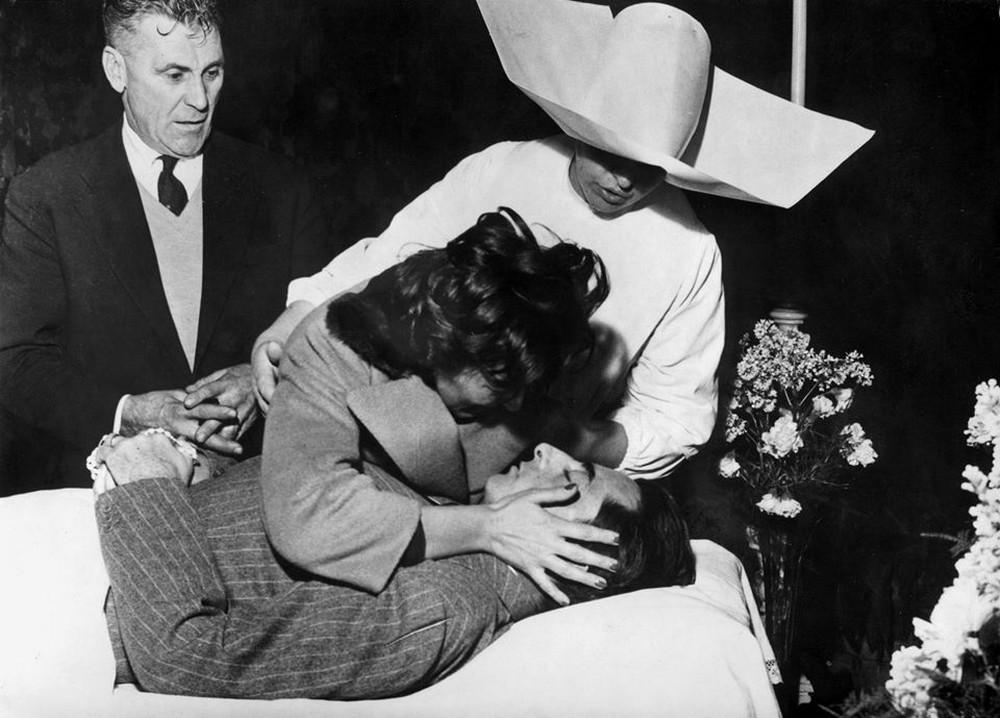
Funeral of legendary cyclist Fausto Coppi, who contracted malaria during an African safari. The 1960 year

Bizarre photos of a French soldier during WWI in a suit (breastplate and helmet), 1915 year
Read more: WWI Christmas truce in 1914: pictures and facts.
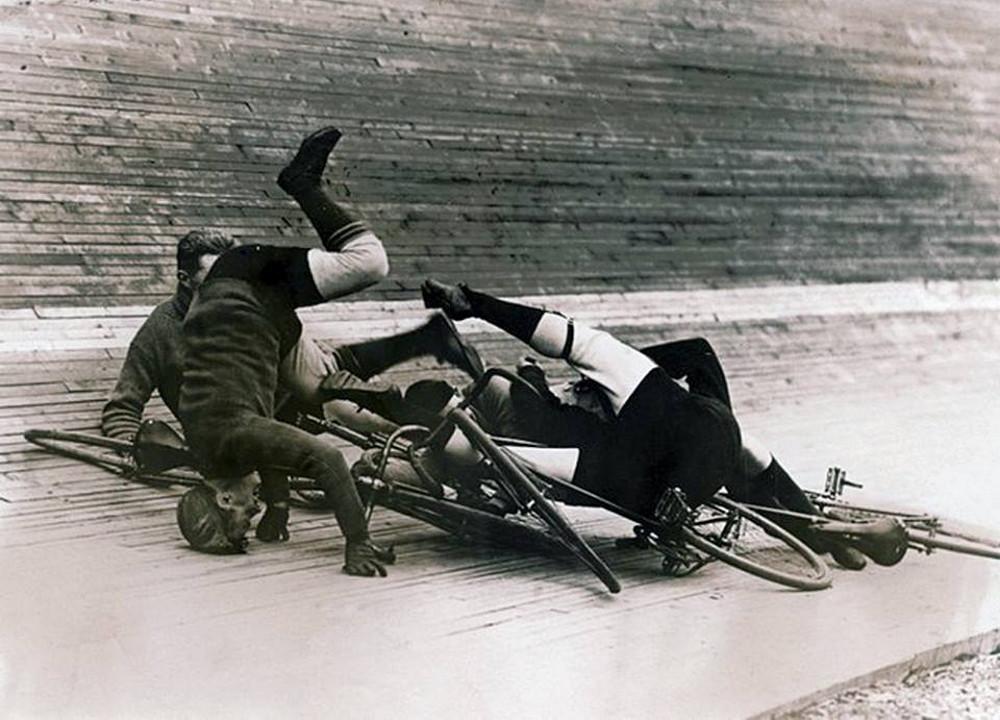
An accident on track during a 6-day bike race at the Madison Square Cycle Track. New York, 1913
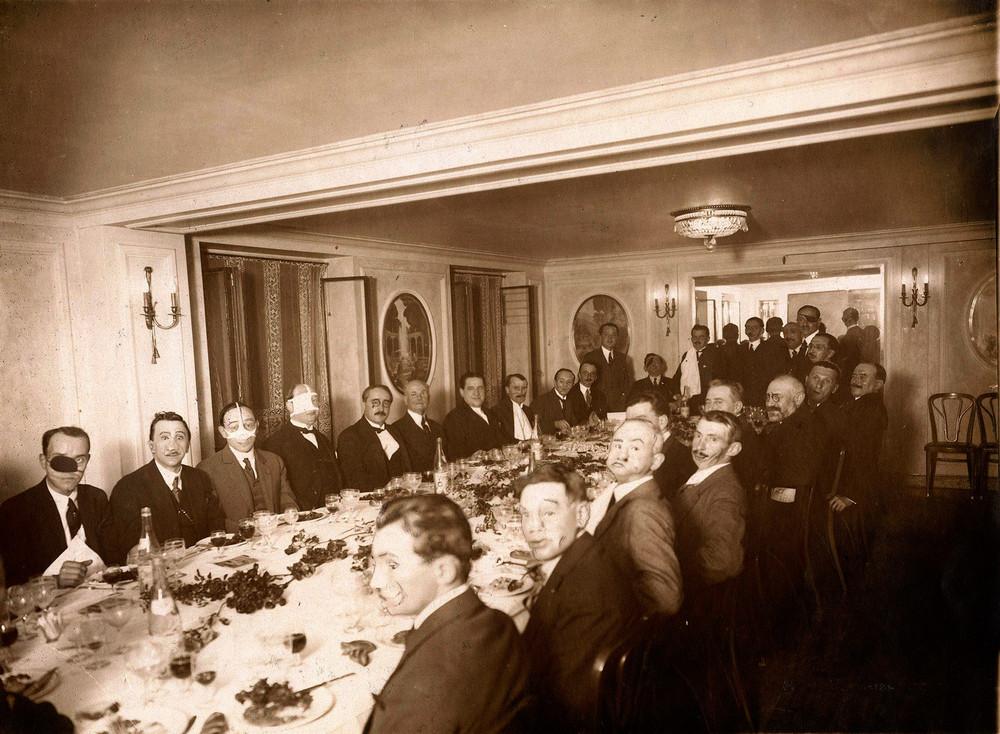
Faces of war. A banquet for French soldiers who received grievous injuries during WWI, Henri Manuel, Paris, 1925.
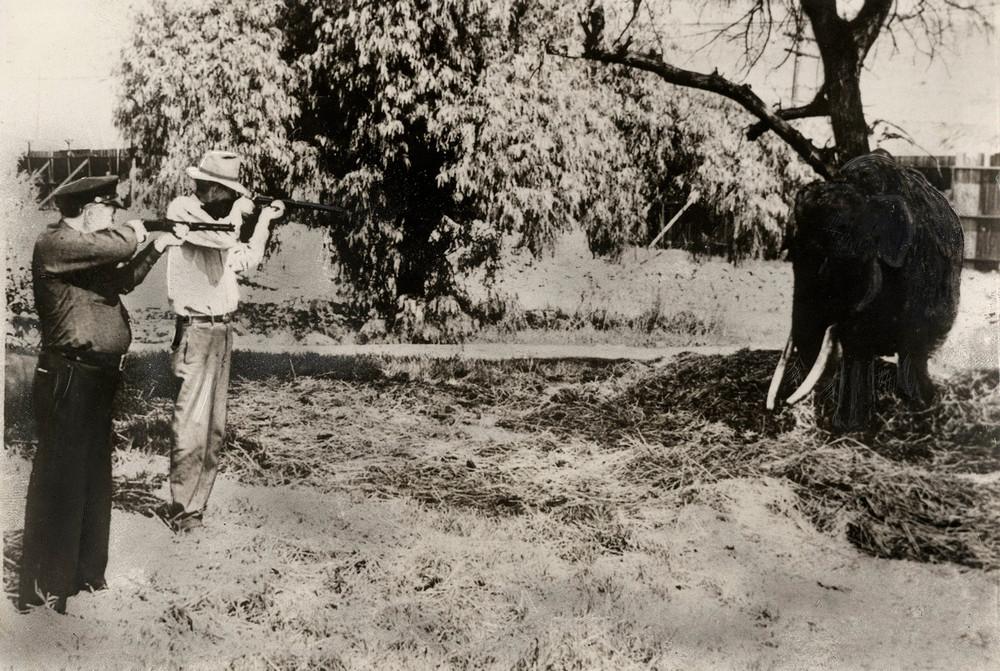
The expiration date has passed. Billy, the elephant at the Los Angeles Zoo, was shot. Old elephants can become uncontrollable, and the zoo staff decided to protect themselves. 1939
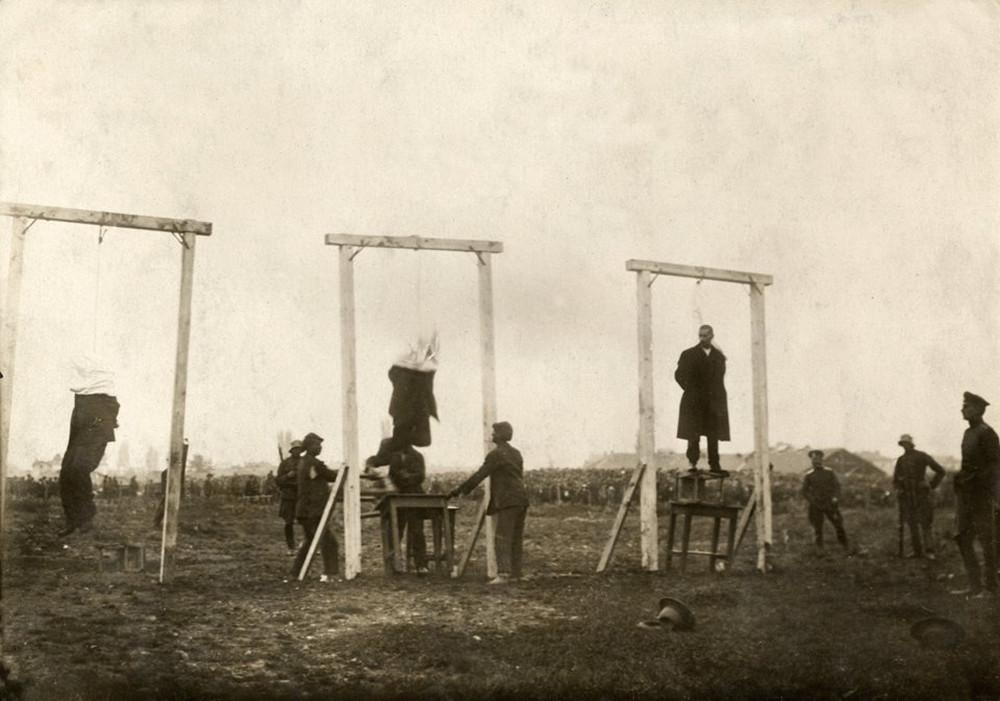
Execution of terrorists who staged an explosion in the Cathedral of Holy Week in Bulgaria, killing more than 200 people died,
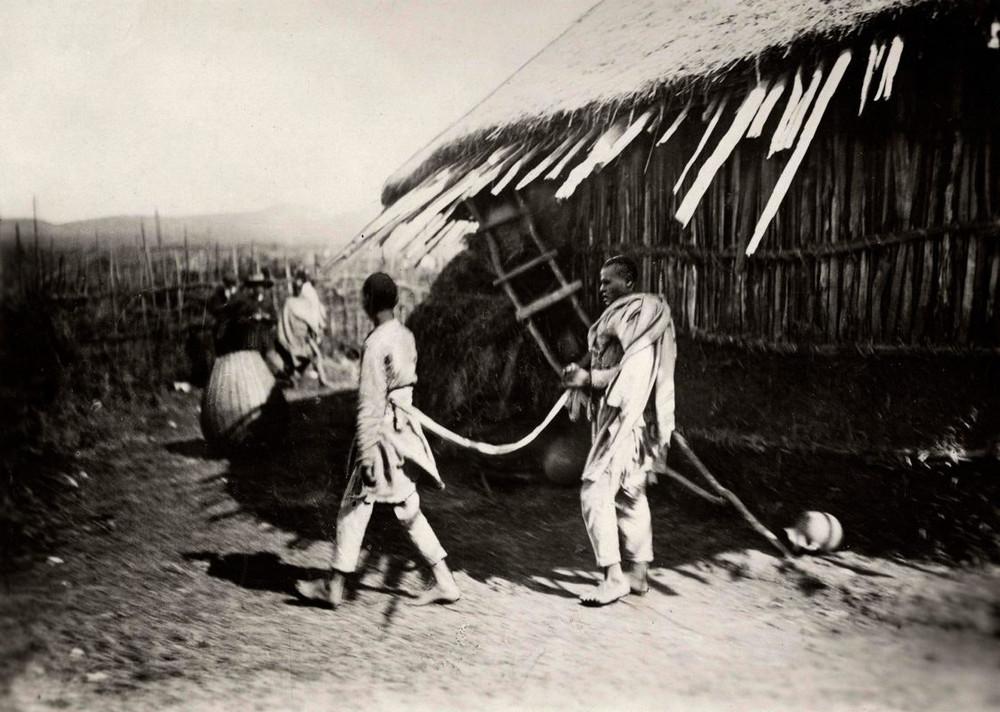
Bizarre photos of the Ethiopian thief catcher. After drinking a stimulating mix of unknown ingredients, the priest throws a rope over the plaintiff and guides him, closing his eyes, to the alleged culprit. The 1929 year
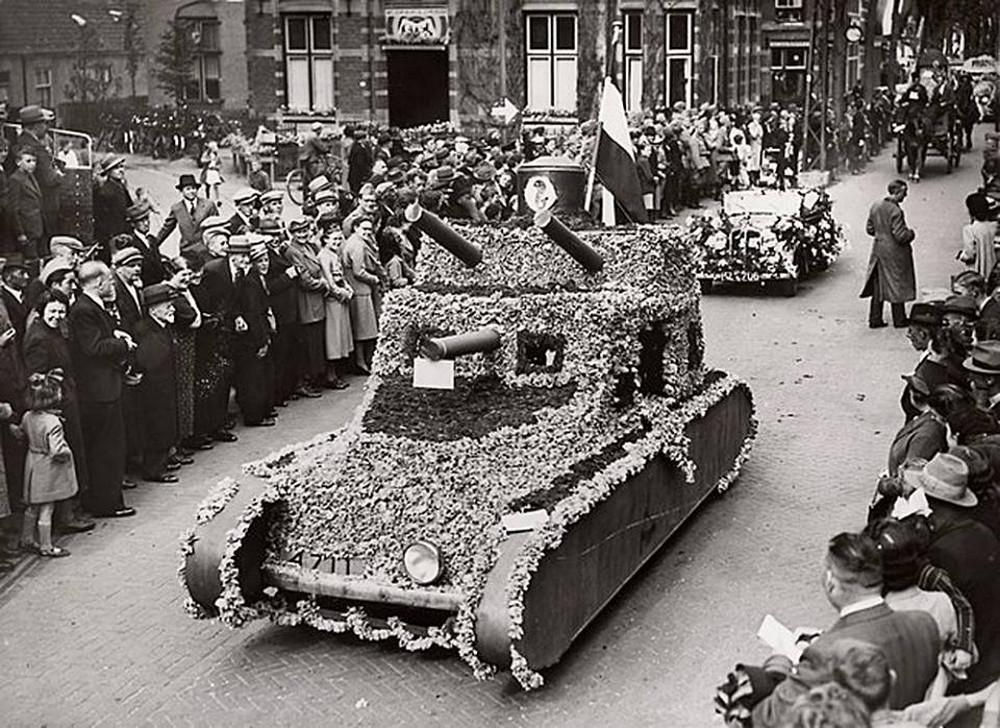
Bizarre disguise photos. Dutch tanks disguised in flowers, shortly before the German invasion. May 5, 1940
Read more: Bizarre WW2 photos
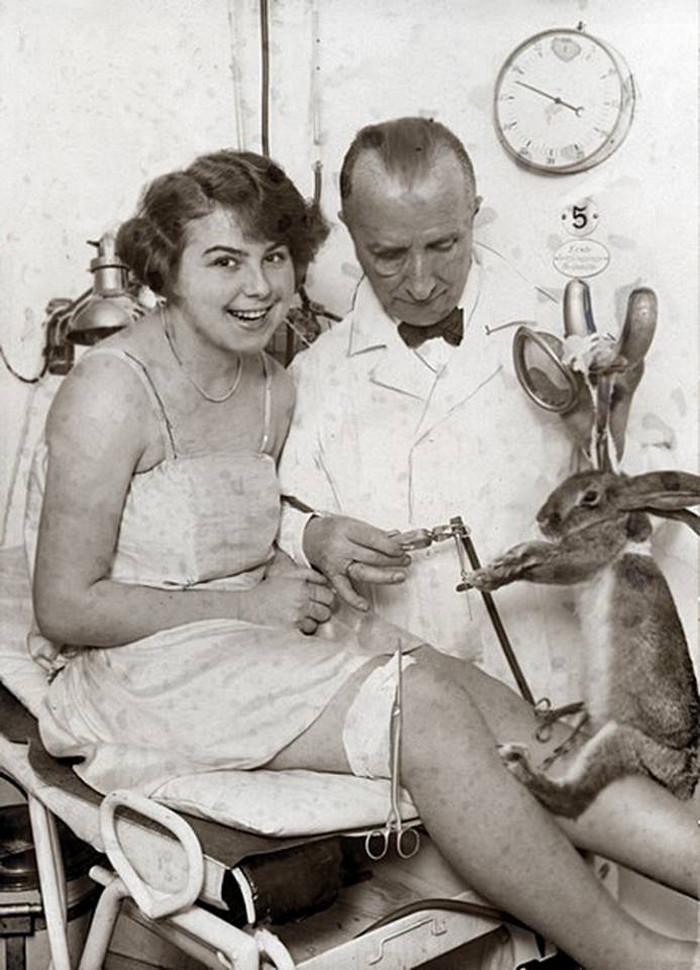
Dr. Heinz makes an injection of fluids taken from a live hare to a person, which, together with ultraviolet radiation and gymnastics, should lead to rejuvenation. Berlin, 1925
Read more: All Pulitzer Prize photos (1942-1967)
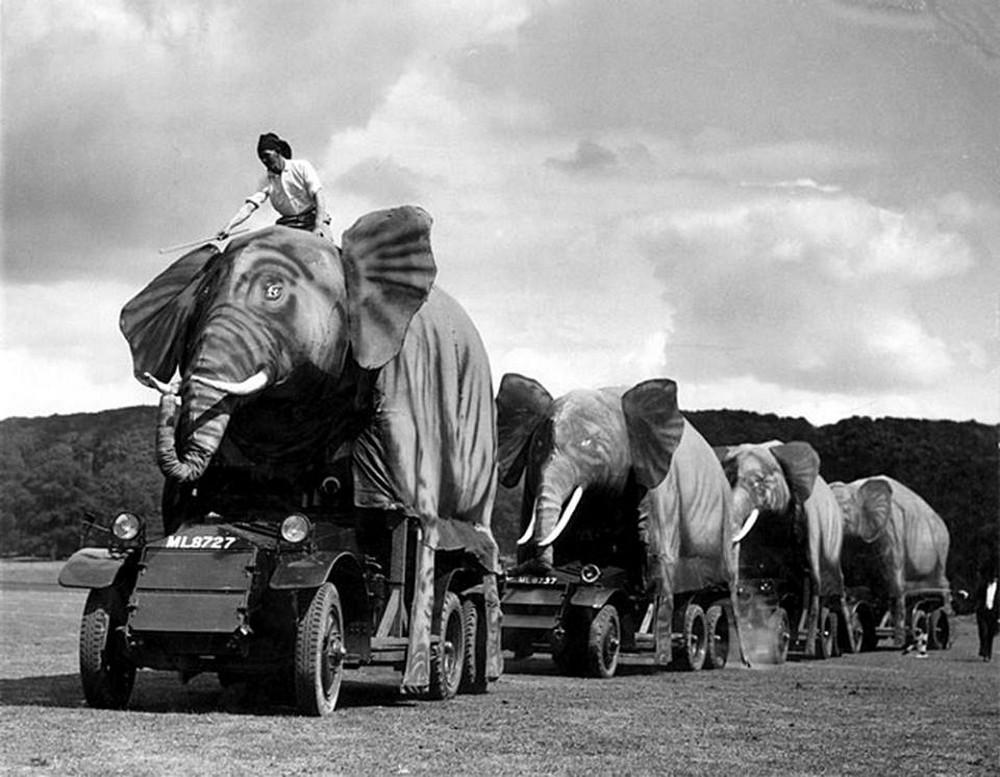
Disguise of British military equipment as elephants, India, WWII

Daughter of the German movie star Marlene Dietrich, starring in the film The Slutty Empress directed by Joseph von Sternberg with her mother. Hollywood, 1934

Charles Jones, 22, is reading to his underage fiancée, Eunice Winstead, nine years old. Their wedding was approved in Tennessee, but not accepted in the rest of the United States. 1937

John Russell’s band warming the public before the Beatles’ performance, 1964
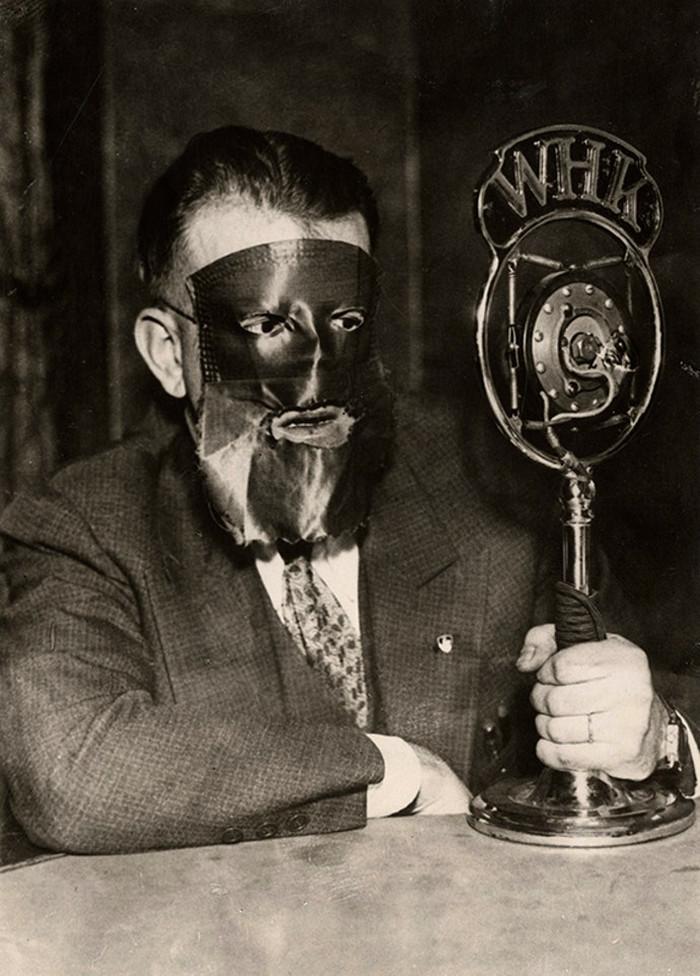
An American lawyer, who wants to remain anonymous, reads out his testimony on investigating a financial fraud case. Ohio, 1933
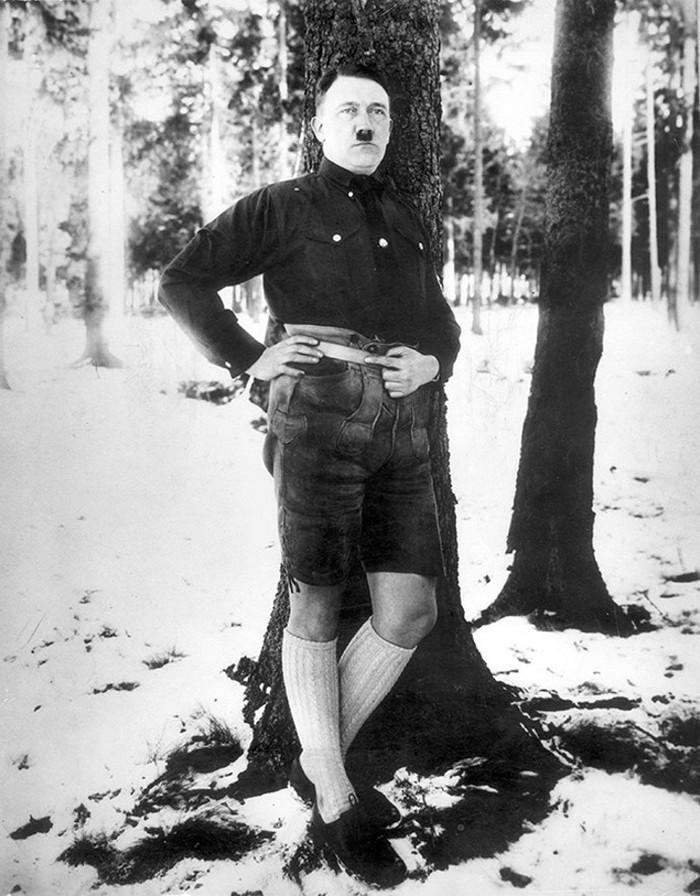
Adolf Hitler in the national trousers of the Tyroleans and Bavarians called lederhosen. It was a campaign photo to gain more popularity in the Southern regions of Germany, June 12, 1927
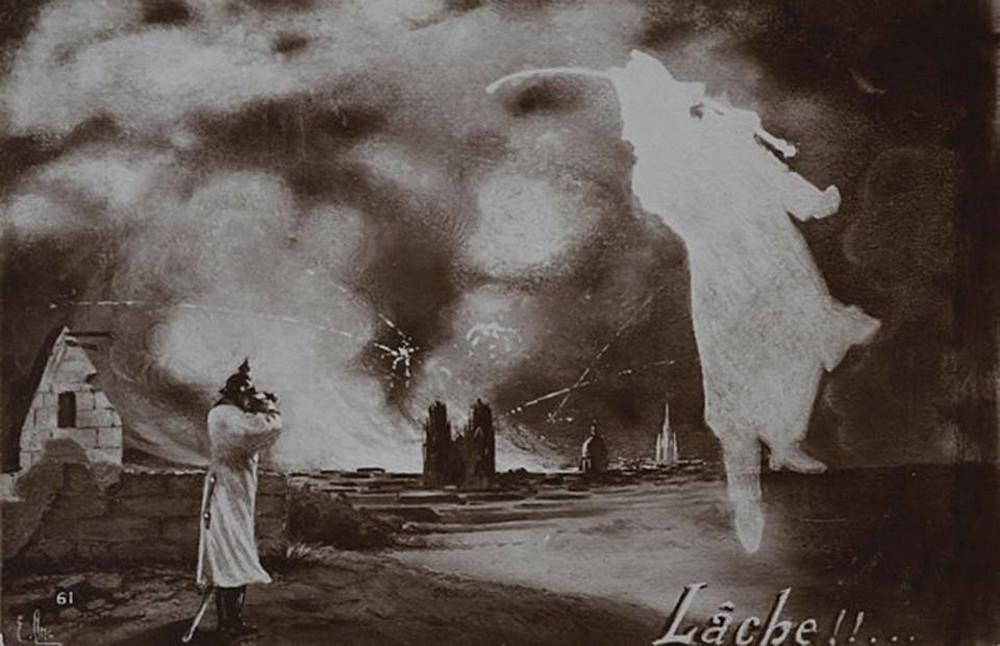
A WWI postcard. A German looking at Notre Dame through binoculars is threatened with a saber by the ghost of Napoleon.
Check out more US WWI propaganda posters.

American singer Al Johnson, portraying a black man on the set of the movie Bar of Wonders. The 1934 year

A hypnotized person, frozen at attention, lies in an extremely uncomfortable position. 1932

A man drags a snake that has just had a hearty breakfast. 1941
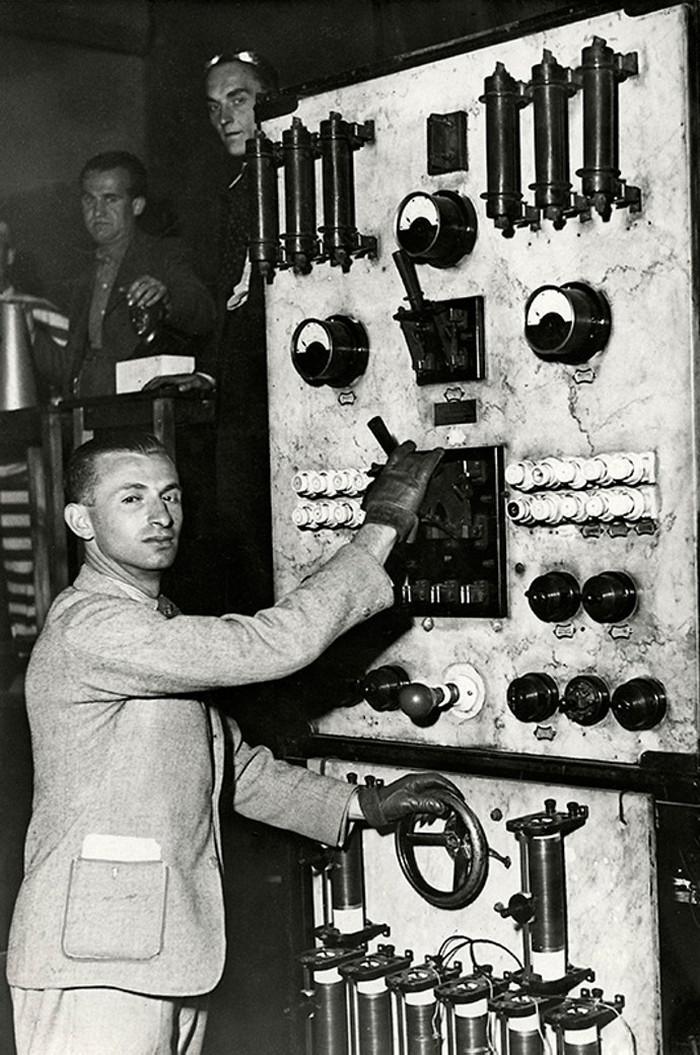
A Hungarian engineer Stefan Nailed near the machine he invented supposedly made people and inanimate objects invisible. 1935
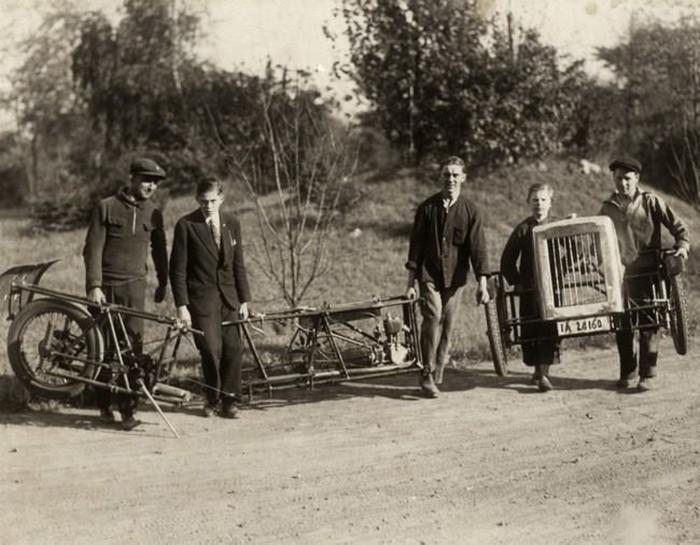
A folding car designed by a German engineer. When assembled, it could drive at 45 KmPh, 1929 year
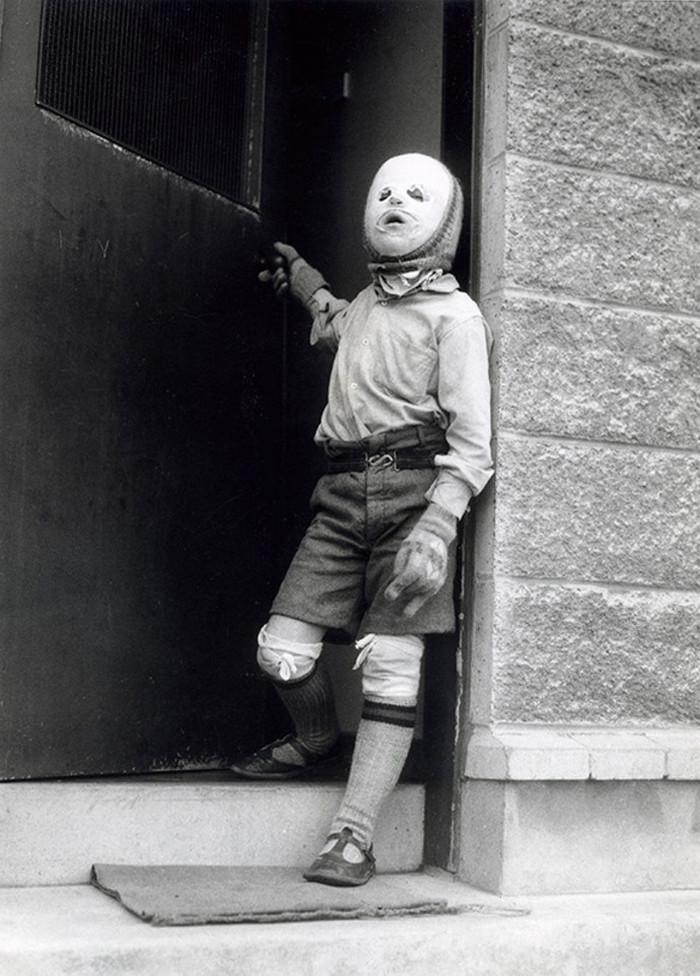
8-year-old Freddie McIntosh in a sun protection suit. The boy’s skin is very sensitive to daylight due to illness.
Bizarre photos from the soviet parade of the 1920s and 1930s
Сообщение 50 amazing and bizarre photos появились сначала на Old Pictures.
]]>Сообщение Nine European kings in one photo, May 1910 появились сначала на Old Pictures.
]]>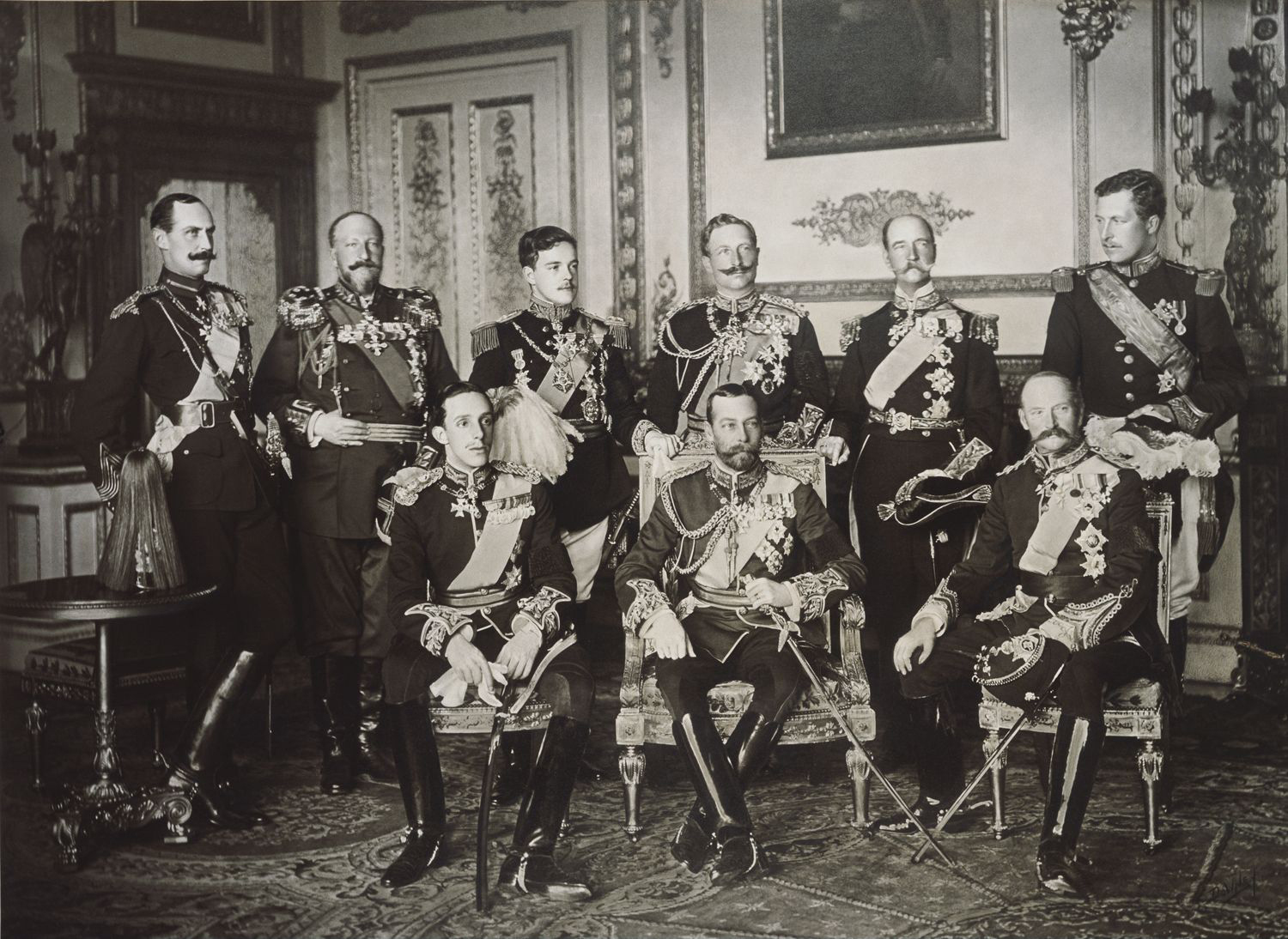 Ironically, these nine kings will be at war (WWI) less than five years after this photo was taken.
Ironically, these nine kings will be at war (WWI) less than five years after this photo was taken.
Nonetheless, there was no high tension between monarchs on May 20, 1910. On this day, masters of the W&D Downey photo studio took this historical image of Nine European Kings at Windsor Castle.
They never gathered together before this day.
Standing: King Haakon VII of Norway, King Ferdinand I of Bulgaria, King Manuel II of Portugal, German Emperor and King of Prussia Wilhelm II, King George I of Greece, and King Albert I of Belgium.
Sitting: King of Spain Alfonso XIII, King of Great Britain and Ireland, George V, and King of Denmark Frederick VIII.
Nine Royal relatives in a photo
There was a reason for all these nine kings to pose for a single photo. All of them were connected with family bonds. For example, Frederik VIII of Denmark (sitting, far right) was a daddy of Haakon VII of Norway (top left). The German ruler Wilhelm II of Germany (top, 3rd from the right) was a cousin of both George V of the United Kingdom (bottom center) and Queen Maud of Norway, who was wife to Haakon VII of Norway and sister to George V of the United Kingdom. Let’s not forget that Haakon VII of Norway and George V of the United Kingdom were brothers-in-law. George V of the UK and Queen Maud of Norway’s mother was incidentally Alexandra of Denmark, sister to Frederik VIII of Denmark. Here’s how Frederik VIII of Denmark was also the uncle of George V of the United Kingdom.
Read more: US WWI propaganda posters.
Again, George was a grandson of Queen Victoria and Prince Albert and the first cousin of Russian King Nicholas II of Russia and Kaiser Wilhelm II of Germany. By the way, Nicholas II also could be present in this photo, but he didn’t manage to come in time.
What will happen to the Nine Kings after this photo
All these elegant and brilliant representatives of their dynasties came together to send off the last journey of the English king Edward VII. They do not yet know what awaits them in the very near future.
The revolutions and social transformations will remove four of nine of these monarchs. One of them will be killed (George I of Greece was shot in March 1913 in Thessaloniki).
In less than five years, Britain and Belgium will fight side by side against Germany and Bulgaria in WWI. Peter of Serbia (another king missing in this photo of the nine) will fight on King George’s side.
Only five of these nine monarchies will survive Norwegian, Spanish, English, Danish, and Belgian.
Read more: Adolf Hitler during WWI: historical facts and pictures
Сообщение Nine European kings in one photo, May 1910 появились сначала на Old Pictures.
]]>Сообщение Adolf Hitler during WW1: historical facts and pictures появились сначала на Old Pictures.
]]>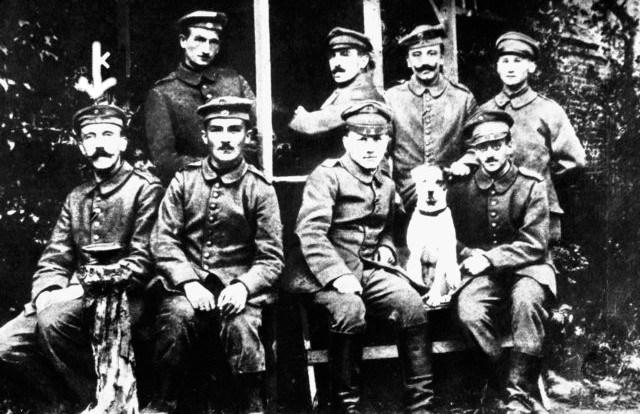 We all know Adolf Hitler for the horrors of the holocaust and the terrifying destruction of WWII. But here’s an interesting one: Hitler started to build his courageous reputation during WW1. He served in the German army from the first weeks of the war, earned some honor and invaluable life experience that influenced his future. Noteworthy, that all significant leaders of that period didn’t dodge the military service. Young Winston Churchill participated in the bloody campaign in South Africa; Joseph Stalin commanded a large number of troops during the Civil War in Russia.
We all know Adolf Hitler for the horrors of the holocaust and the terrifying destruction of WWII. But here’s an interesting one: Hitler started to build his courageous reputation during WW1. He served in the German army from the first weeks of the war, earned some honor and invaluable life experience that influenced his future. Noteworthy, that all significant leaders of that period didn’t dodge the military service. Young Winston Churchill participated in the bloody campaign in South Africa; Joseph Stalin commanded a large number of troops during the Civil War in Russia.
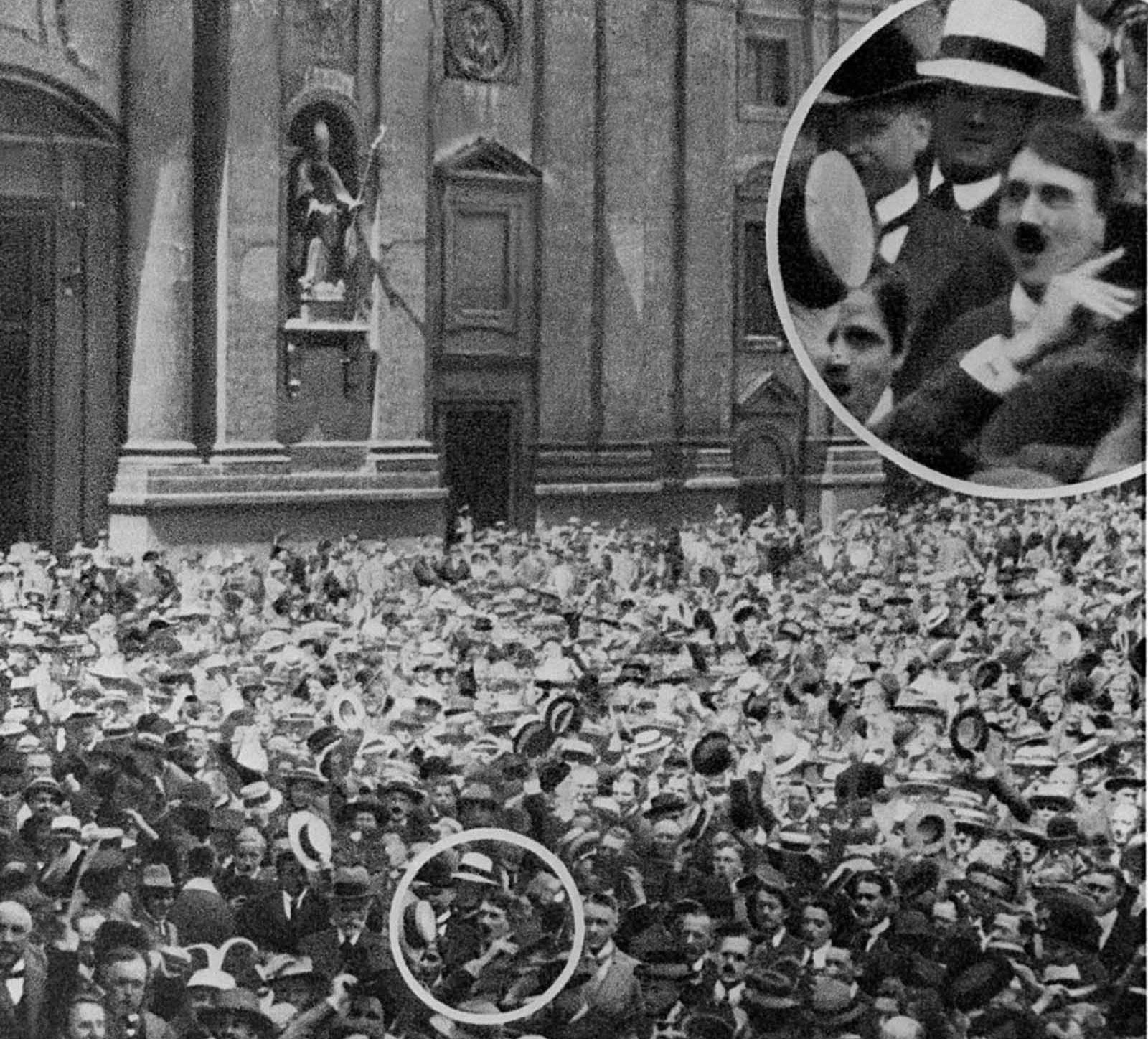
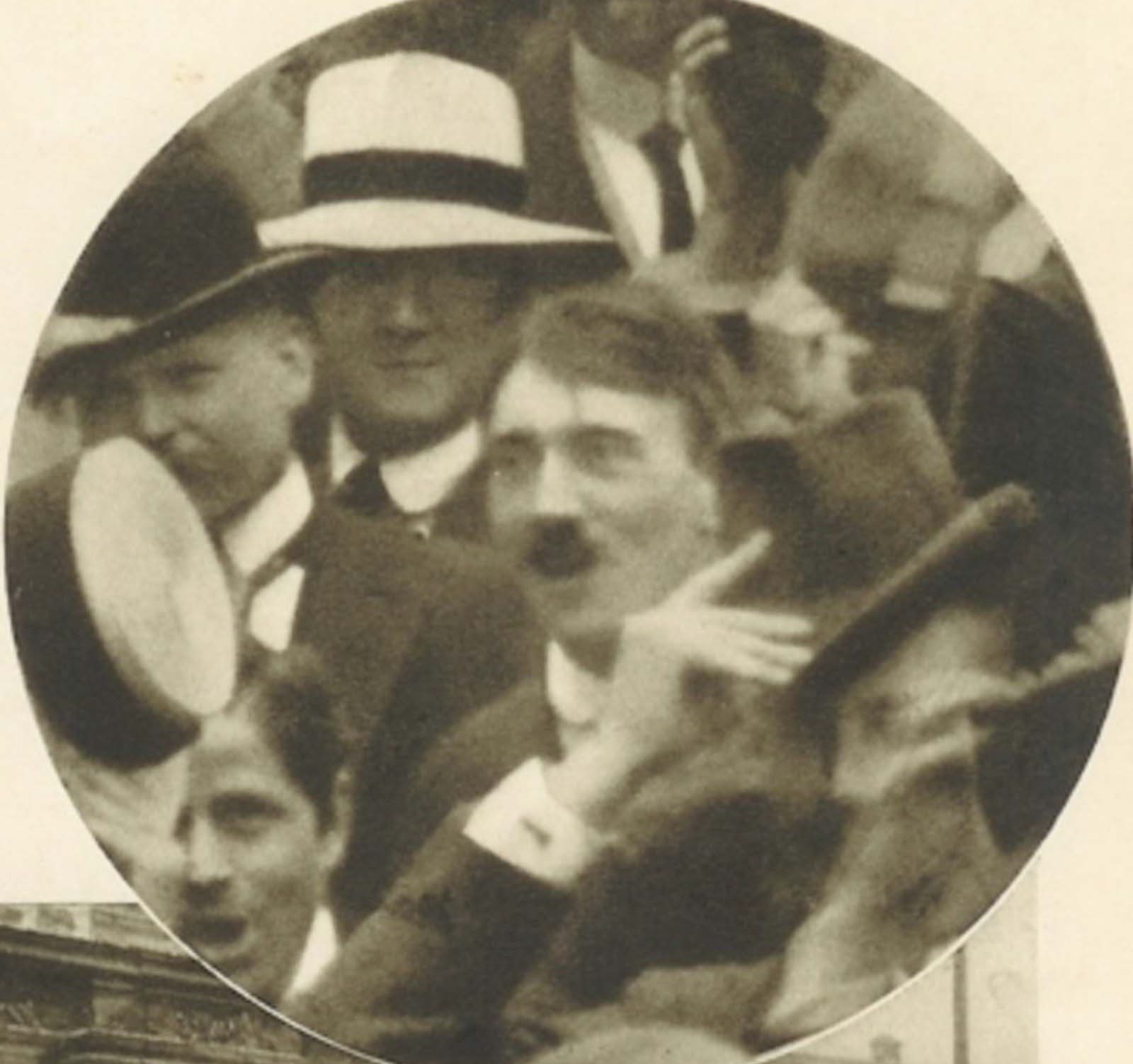
Hitler at OdeonPlatz in Munich, August 1914
Hitler Before the WW1
It’s safe to say that Adolf Hitler was a mediocre personality before WWI. His parents were typical representatives of the middle class in the Austrian Empire. Young Adolf didn’t use a chance to start any decent career in pre-war Austria and relocated to Germany. Hitler positioned himself as an intellectual Austrian Empire’s German elite but never found any way how to make money with this mindset. Historians claim that Adolf selected that military career will fit him best. And the main reason why Hitler preferred the German army service to Austrian was a reluctance to serve alongside Czechs, Croats, and Jews, whom he disliked.
Fake photo start
This photo appeared in various samples of german propaganda during the 1930s. It showed how close Adolf Hitler was with ordinary people before WW1. Munich photographer Heinrich Hoffmann took this photo at a demonstration in support of the war against Russia in Munich’s Odeonsplatz on August 2, 1914. Nevertheless, various historians doubt that it was a real photo with Adolf Hitler. They state that Hoffmann handled the image to highlight the soon-to-be-dictator. While the original negative of this picture was lost, it’s hard to prove if it was real. Other photos of that period show Hitler with a more massive mustache. The fashion of shaping facial hair down to a “toothbrush” is linked to the wearing of gas masks. Tiny mustache allowed to wear gas protection more comfortably; Taking to account the history of gas masks usage, we may conclude that it was unlikely that Adolf Hitler could have a tiny mustache in 1914.
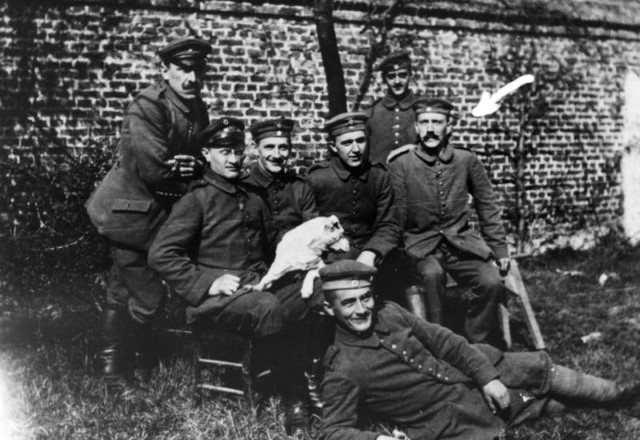
Hitler is seated on the far right of the group of WW1 comrades.
Like a local Bavarian
Hitler had avoided the Austrian enlist for nationality reasons mentioned above. At the same time, he didn’t miss a chance to join the Bavarian army. Thus we cannot accuse Hitler of acting cowardly.
By the way, while being a part of Germany, Bavaria secured its independent army. The Austrian-born Adolf Hitler requested the right to join that army. On August 16, 1914, he entered the barracks of the 16th Bavarian Reserve Regiment.
The Massacre of the Innocents
It didn’t take to long for Hitler to get into the real WW1 massacre. During the first couple of months, he participated in the most horrible battles the German troops encountered.
In October 1914, German and British divisions expanded the front line, as they rushed to close the gap between their positions and the sea. Reserve armies, including the 16th Bavarian Reserve, relocated to Ypres.
In late October, those units assaulted the exhausted but experienced veterans of the British Expeditionary Division. The fresh German recruits experienced a terrible defeat. The 16th engaged in an encounter with 3,600 men. Only 611 unwounded survivors left in just five days. In two weeks, Hitler’s platoon of 250 soldiers was down to 42.
The losses were devastating. Those young men who survived called this battle the Massacre of the Innocents.
But Hitler proved himself as a brave soldier. He got a promotion to lance-corporal and recommended for the Iron Cross Second Class.
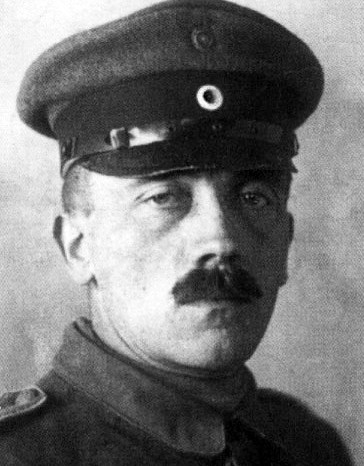
Hitler, 1914
Military and Social Promotion
While serving in Bavarian Reserve, Hitler felt happy for the first time in his life. It was a perfect chance for social progression.
Hitler obtained a decent amount of medals and honor during the rest of WW1.
There’s no surprise that every german who served with Hitler told about his bravery. Please note, that many of that memoir dated earlier than Adolf Hitler took power in Germany. His former officers remembered him as a “reckless attacker” and “honorable nature.” Well, WW1 discovered the best sides of Hitler.
Hitler served as a runner, communicating messages back and forth between the trenches and commanders. His political opponents used this fact to undermine his reputation. They said he had not faced the risks of the front line, and he wasn’t in the trench during french raids. In fact, they were wrong.
Messengers did not participate in the bloody trench onslaughts. But they didn’t take a rest a stay safe at the same time. Artillery bombardments, gunfire, and gas, could finish the runners’ life immediately. For example, three out of the eight messengers in Hitler’s unit were killed and a fourth severely wounded during the first couple of days of real action.
Bapaume wound
Hitler was wounded several times during WW1. The battle near Bapaume in 1916 caused the most severe damage to his health. The fragment of shell immobilized his leg, and Adolf had stayed behind. He couldn’t leave the battlefield without assistance on that day. The wound was so bad that recuperation took long five months.
Hitler spent all WW1 time on the West Front, from October 1914 to October 1918. They’re not so many combatants with greater war hours count. But Hitler liked his WW1 experience. He spoke about it as it was the greatest of all adventures. Being part of something greater, serving with personalities he admired, it was a powerful life action for a young man.
Hitler never thought that WWI was a historical tragedy of humanity. It was a heroic battle that he participated in with comrades, and essential in a way his civilian life had never been.
The End of the War
Hitler spent several months on the quiet lines near Alsace. The rest of the war he served near Ypres. It was the snowiest, swampiest, most violently contested area of the front.
Heavy shelling, non-stop machine gun fire, and trench attacks became a daily routine. Hitler’s division encountered in the battles of Ypres, the Somme, and Arras – fights recognized with horror for their cold desolation and terrible losses.
On October 13, Hitler was in the Avangard trenches when the British started a gas attack. The gas flowed unnoticed into his burrow overnight. At dawn, he traveled toward the corps base with a note. The gas blinded Hitler, and he denied any try to hospitalize him.
An honor for courage
Hitler’s war experience was remarkable. In four years of service, he took part in twelve battles and twenty-five other stints of trench duty.
The war developed military Hitler. The worst horrors of war were somehow linked with the best days of his life.
Сообщение Adolf Hitler during WW1: historical facts and pictures появились сначала на Old Pictures.
]]>Сообщение Serbia in WW1: photos and facts появились сначала на Old Pictures.
]]>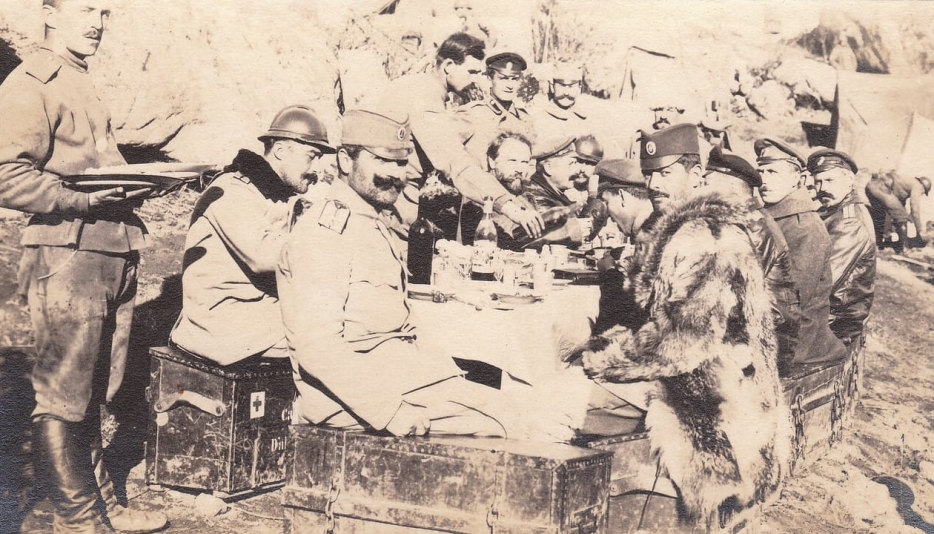
Serbian and Russian officers are having breakfast on the front, 1916.
WW1 is a significant chapter in the History of Serbia. This young Slavic state was in the middle of historical events from the first days of the war. WW1 started when the Austro-Hungarian Empire declared war on Serbia. It happened right after 19-year old Serbin Gavrila Princip triggered the action: assassinated Franz Ferdinand, the prince of Austria. The young revolutionary couldn’t even imagine what kind of historical tornado he called in his home country. Serbia desperately fought till the last day of WW1, losing at least a quarter of its population dead or lost.
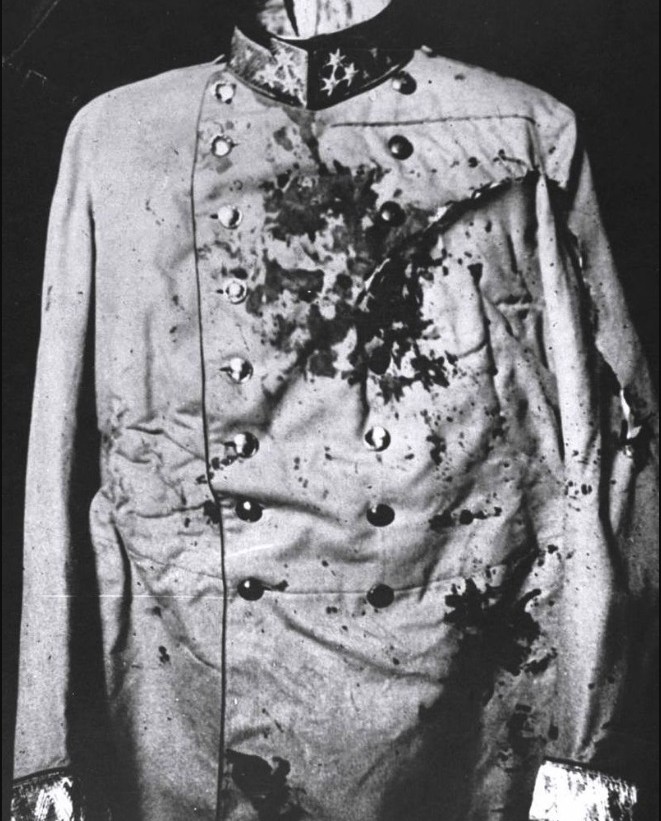
The uniform of Archduke Franz Ferdinand from 1914, whose assassination triggered the outbreak of World War I
Long way to independence
Serbia covered a long way to its independence from the Osman Empire. Serbians initiated three uprisings against the Muslim rulers at the begging of the 19th century. As a result, the sultan recognized Milos Obrenoviche as a ruler of Serbia in 1815. But the formal independence came in 1878, after the war between Russia and the Osman Empire.
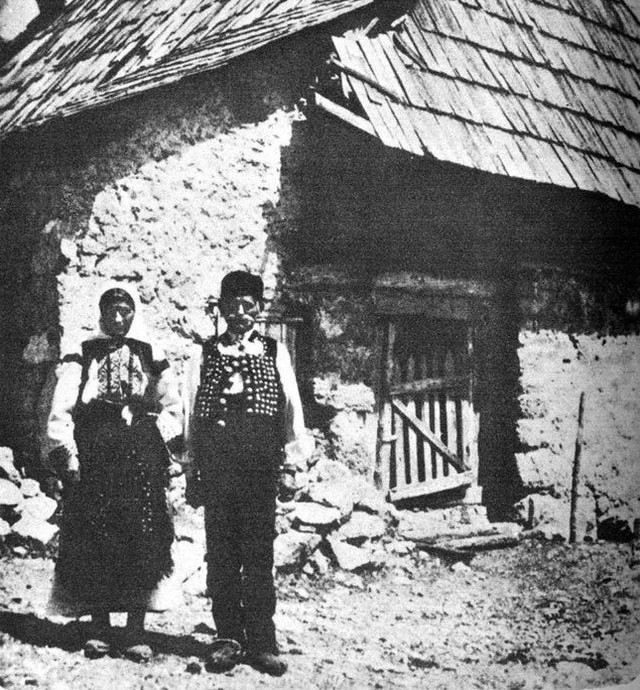
Gavrilo Princip’s parents in front of their house, the early 1900s
Serbia was independent, but not satisfied by the beginning of WW1.
While gaining independence, a lot of Serbians dreamed of uniting all of the south Slavic people under the rule of Belgrade. Some of those Slavic territories were a part of the Austro-Hungarian Empire. Vien set the region on fire, supporting numerous conflicts between Slavic states of Balkan region during so-called Balkan wars of 1912-1913

King Peter I of Serbia (center right) in conversation with his Prime Minister, Nikola Pašić (center left), during WWI
How one revolutionary from Serbia could start WW1
There’s a historical fact that WW1 started right after Gavrilo Princip murdered Franz Ferdinand in Sarajevo in 1914. But the truth is that WW1 had to begin in one way or another. Austro-Hungary was preparing for it, Germany was preparing for it… Countries of Antanta did so too. It was a matter of time.
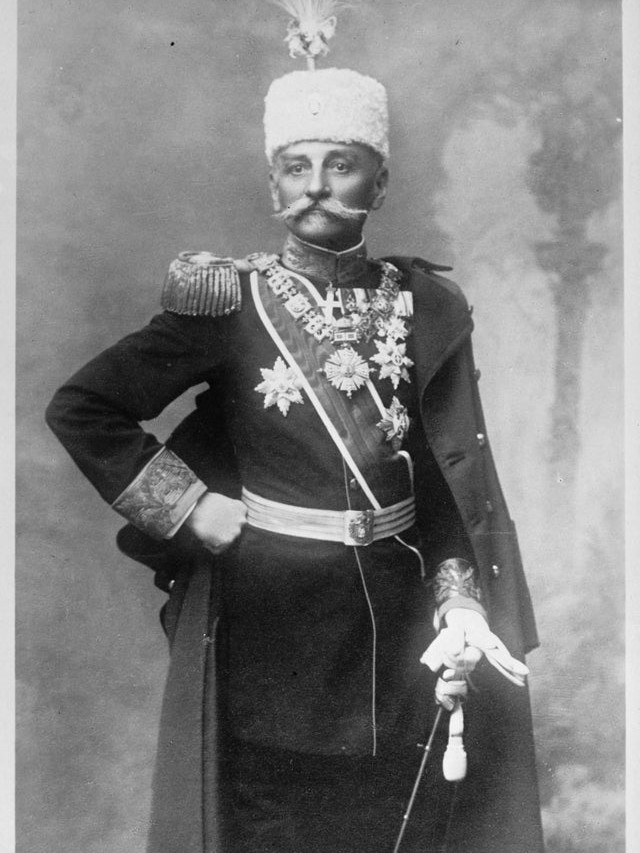
Peter, King of Serbia at the beginning of WW1, 1914
A poor start…
The first weeks of WW1 had brought some mixed success to the army of Serbia. Combat operations in this sector of the front went on with varying success. After winning some battles in August 1914, including the one in the region of the Tser ridge, Serbians couldn’t resist overwhelming Austria. The Austrian troops took the Serbian capital in November 1914, despite the active help from Russian and French soldiers.
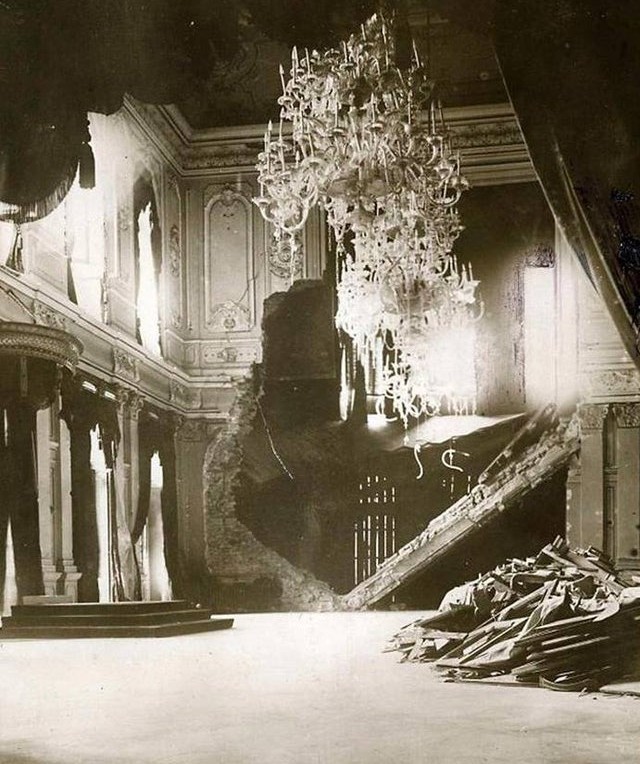
The throne room in the Royal Palace in Belgrade, Kingdom of Serbia, October 1915
A king of Serbia in the trenches of WW1
King Peter joined the army of Serbia in November 1914. He couldn’t act like french trench raiders, but he managed to ignite the inner fire in his troops that suffered poor morale. Peter ordered a new offensive. Serbian started it on December 3, 1914. During the 12 days of fighting on the river Kolubare and river Drina, they defeated the Austro-Hungarian troops. On December 15, the Serbians took Belgrade back. Not a single Austro-Hungarian soldier remained on Serbian territory; more than 50 thousand prisoners were captured, 126 cannons, 70 machine guns, and many other trophies.
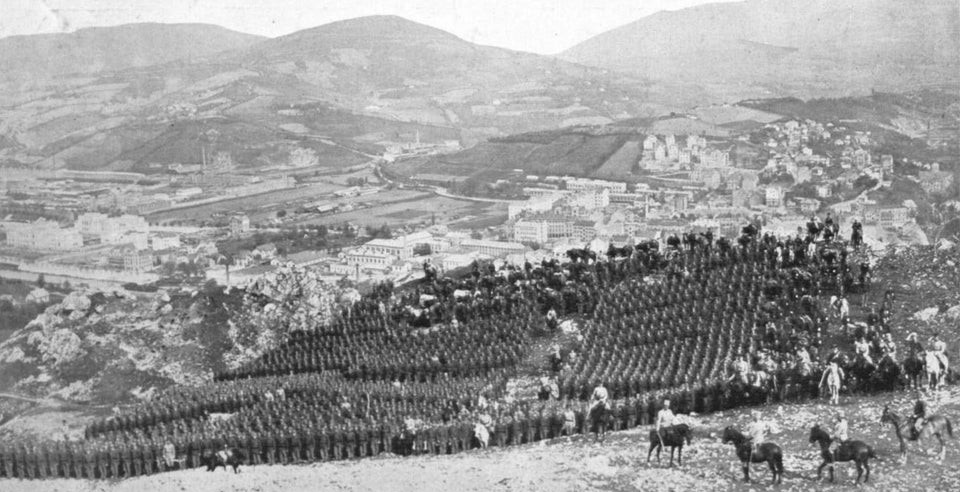
Mobilized Austro-Hungarian troops sent across Sarajevo for Serbia, 1914.
The fails of 1915
Serbia passed through two major historical blows during the battles of WW1 in 1915. It all started when the German forces joined the Austro-Hungarians in October 1915. Austro-Hungarian and German troops suppressed the fierce resistance of Serbians and retook Belgrade on October 9. Serbs retreated to the south.
The second blow came from the Balkanian brothers. On October 14, Bulgaria entered WW1 on the side of Germany. Bulgarians invaded Serbia on the morning of the next day.
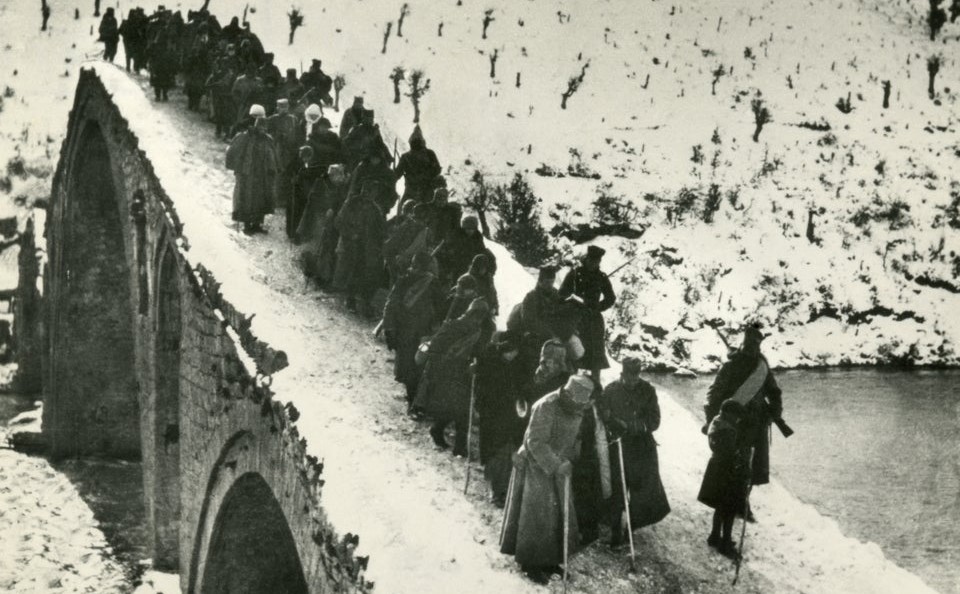
King of Serbia while crossing the Drim river during the retreat of the Serbian Army in December 1915
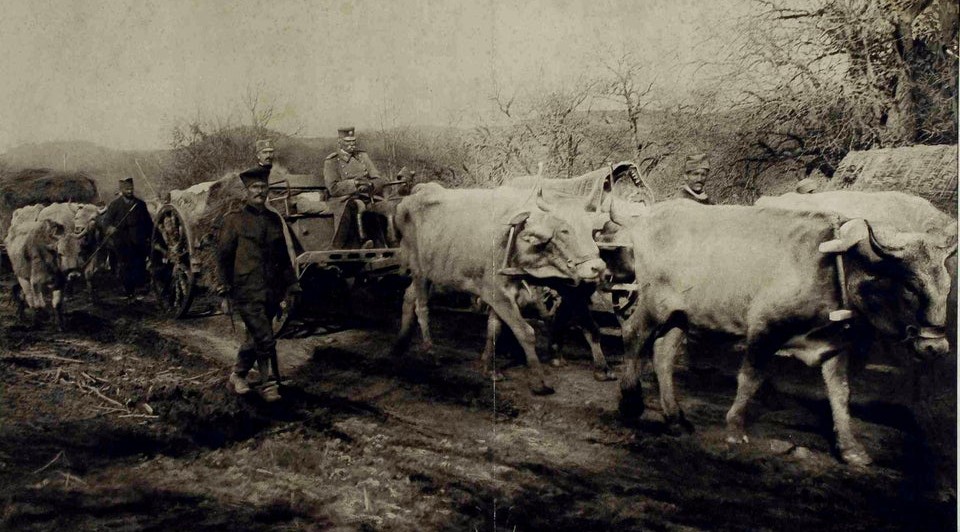
71-year-old Peter I, King of Serbia, retreats across Jankova gorge, November 1915
An Italian retreat
Lost battles forced the French command to transport the Serbian army to Italy, and then to Tunisia. Serbian units restructured there and subsequently returned to the front. This relocation required massive naval support. The helping hand came from France and England.
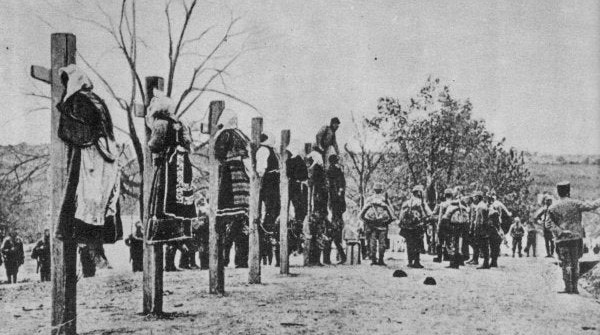
Austro-Hungarian soldiers executing men and women in Serbia, 1916.
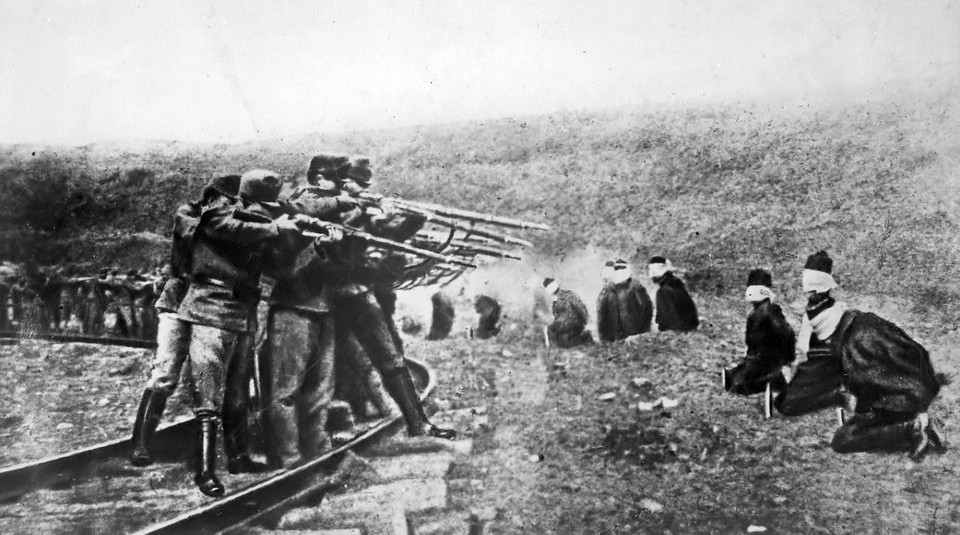
Austro-Hungarian troops executing captured Serbians, 1917
Serbs continue to fight on the Thessaloniki front
Serbs continued resistance in Albania on the so-called Thessaloniki front. France reinforced the Serbians with their divisions in May 1916. In total, the Serbian troops numbered 130,000 people. The allied forces in the Balkans reached 300,000.
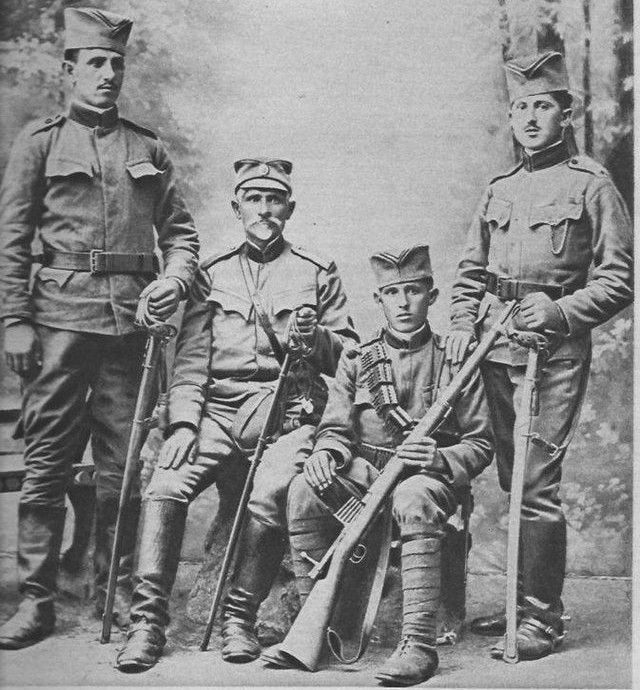
Captain of the Serbian army. A veteran of 7 wars, again on the front with his three sons. WW1 -1915
Long-awaited victory
Antanta troops received significant superiority by the end of the summer of 1918. They initiated a new offensive with extensive usage of gas attacks on the Thessaloniki front. Demoralized Bulgaria could overcome this defeat and capitulate on September 29. Serbian army victoriously entered Belgrade on October 18, 1918. It was a new glorious page in Serbian history – Belgrade became the capital of the Kingdom of Serbs, Croats, and Slovenes (since 1929 – Yugoslavia).
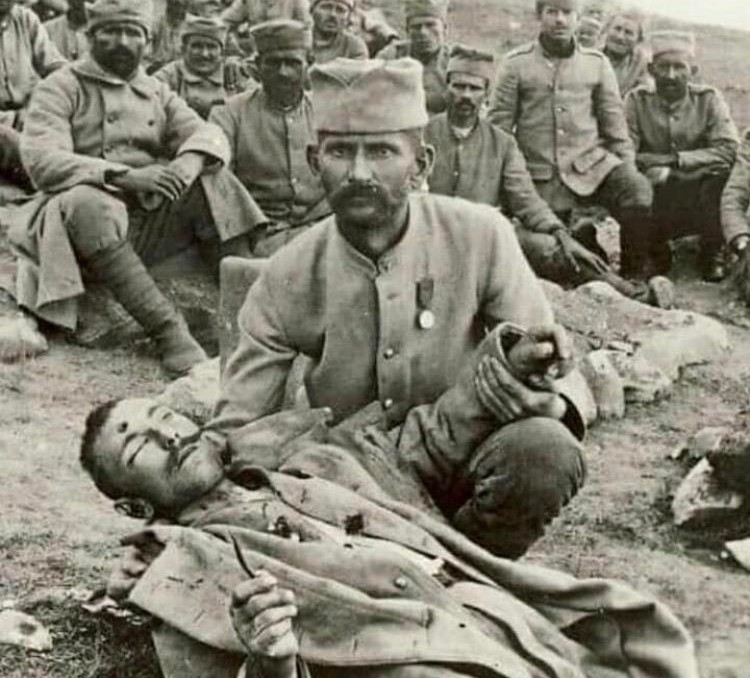
Serbian soldier holding his dead brother. Battle of Kaymakchalan, Serbia 12.09.1916 WWI
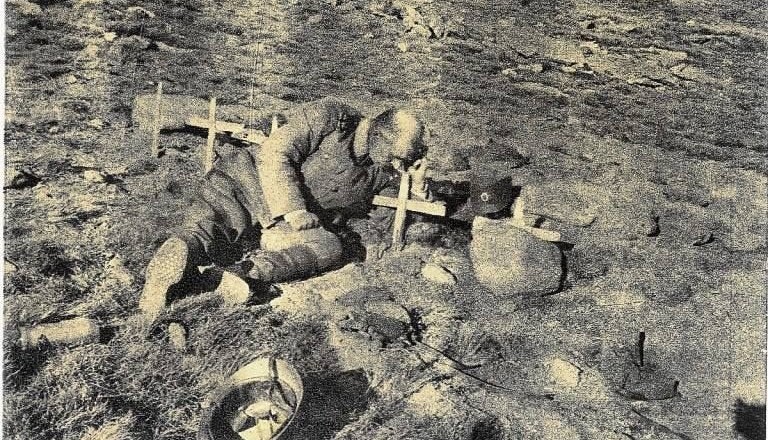
Serbian soldier on his only son’s grave (also a soldier), WW1. Serbia lost 25% of the population (1 million killed_died), including 60% of the adult male population in a war.

Soldiers of the 1st Bulgarian Army salute a column of German soldiers passing through Paraćin, Serbia, in November 1915.

Muslims of the Serbian Army Laying Oath before the Mufti of Niš (Niš, Serbia, 1915)
Сообщение Serbia in WW1: photos and facts появились сначала на Old Pictures.
]]>Сообщение Trench raiders wearing gas masks during WW1 появились сначала на Old Pictures.
]]>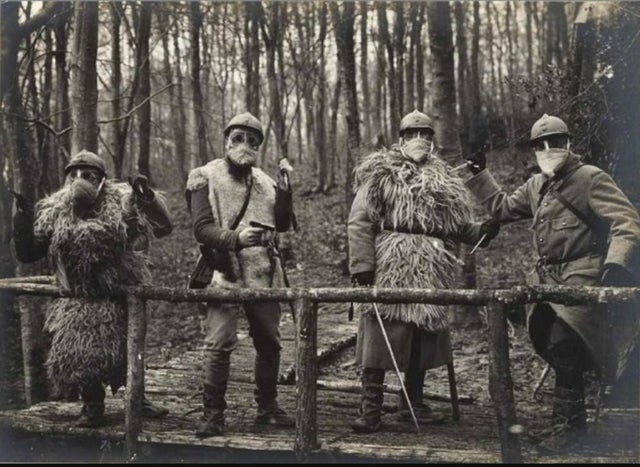 Yes, if you wanted to survive WW1, you had to wear gas masks. Even if you’re french commandos, the so-called trench raiders. The trench raiders usually used knives or light weapons during their missions. They are wearing gas masks and camouflage and never used signs of the French army. Those die-hards used german crosses and uniform elements instead. Their goal was to come as close to the enemy’s trench, get inside and stab as many opponents as possible. Surprisingly, but theirs WW1 gas masks served a crucial role in survival. The German war protocol strictly prohibited the wearing of gas masks during the action. It was forbidden to take them off, and the officer couldn’t order so while in a trench. When the German officer had an urgent need to see the soldier’s face, he had to take him off the trench and take the mask off in a safe place. Here’s how trench raiders had a chance to disappear in the trenches while doing their risky job.
Yes, if you wanted to survive WW1, you had to wear gas masks. Even if you’re french commandos, the so-called trench raiders. The trench raiders usually used knives or light weapons during their missions. They are wearing gas masks and camouflage and never used signs of the French army. Those die-hards used german crosses and uniform elements instead. Their goal was to come as close to the enemy’s trench, get inside and stab as many opponents as possible. Surprisingly, but theirs WW1 gas masks served a crucial role in survival. The German war protocol strictly prohibited the wearing of gas masks during the action. It was forbidden to take them off, and the officer couldn’t order so while in a trench. When the German officer had an urgent need to see the soldier’s face, he had to take him off the trench and take the mask off in a safe place. Here’s how trench raiders had a chance to disappear in the trenches while doing their risky job.
Why combatants need gas masks during WW1
Germans were the first to realize the efficiency of the gas attacks, but other countries followed them very soon. The very first german forces used chemical shells on April 22 versus the french division. Russian forces faced the green gas threat on May 31, 1915. A greenish cloud that appeared above the trenches at about 3:30 a.m. was mistaken for a well-known smoke screen, usually followed by an attack. Therefore, reserves tightened around the front line, and the forward line as crowded as possible.
Two Russian regiments were virtually destroyed as a result. Losses included 16 officers and 3147 soldiers. Total casualties on the entire front sector hit eight thousand.
All sides of WW1 widely used gas attacks until the last days of the war, due to their effectiveness. Here’s why gas masks were the only way to survive for infantry, civilians, and even animals during the war action.
Сообщение Trench raiders wearing gas masks during WW1 появились сначала на Old Pictures.
]]>